WOW! and look at that trash pile!! ![]() So Veromessor like seeds? We don't have any of this Genus in MD.
So Veromessor like seeds? We don't have any of this Genus in MD.
- Formiculture.com
- Forums
- Gallery
- Members
- Member Map
- Chat

WOW! and look at that trash pile!! ![]() So Veromessor like seeds? We don't have any of this Genus in MD.
So Veromessor like seeds? We don't have any of this Genus in MD.
Billy
Currently keeping:
Camponotus chromaiodes
Camponotus castaneus
Formica subsericea
Update 11-9-2019
This colony is just getting bigger and bigger. I estimate about 1000 workers now. I recently moved them into the same vertical prototype formicarium I had my V. pergandei colony of 3000 in before, but I will have to move them into something larger very soon.
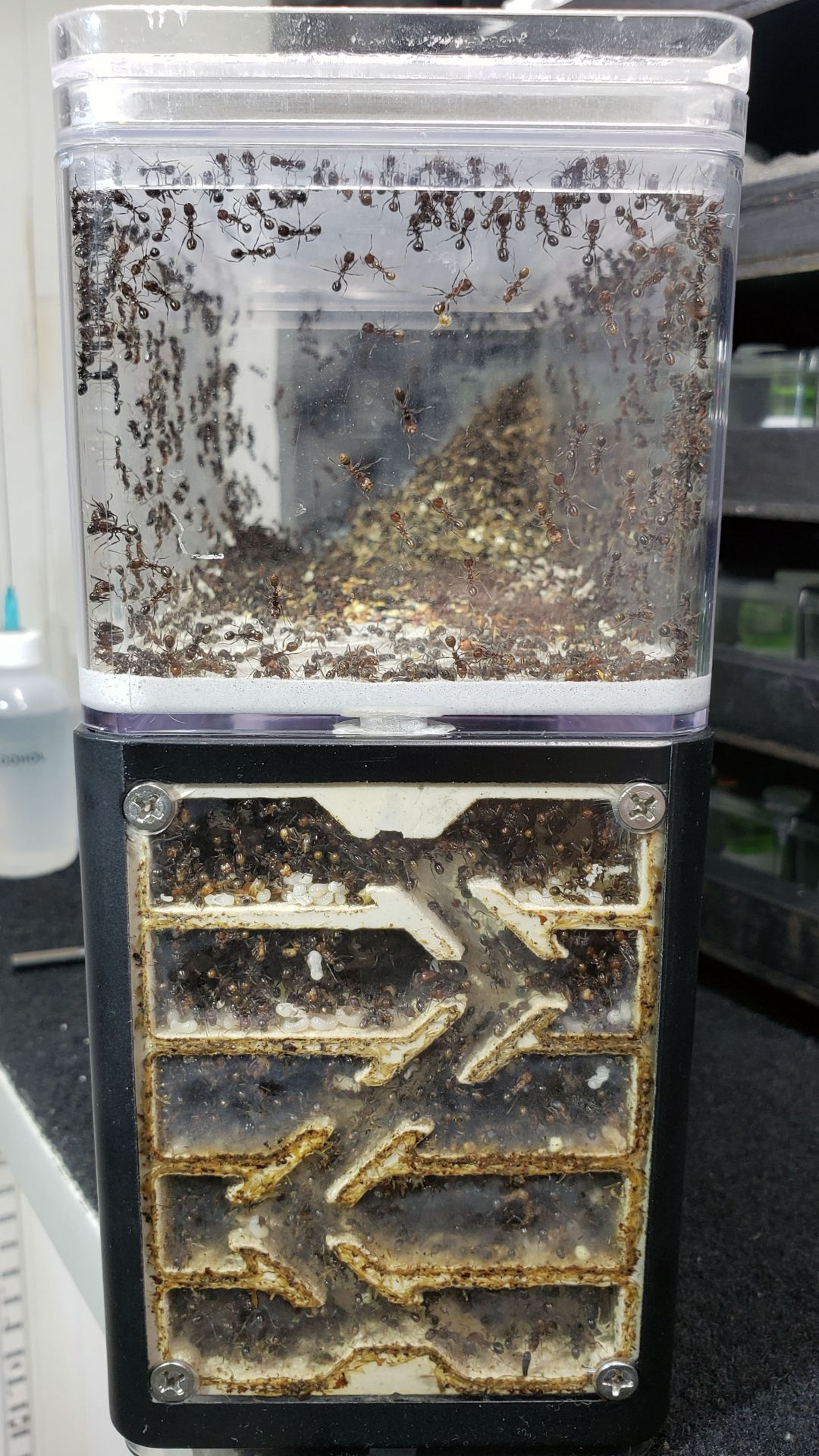
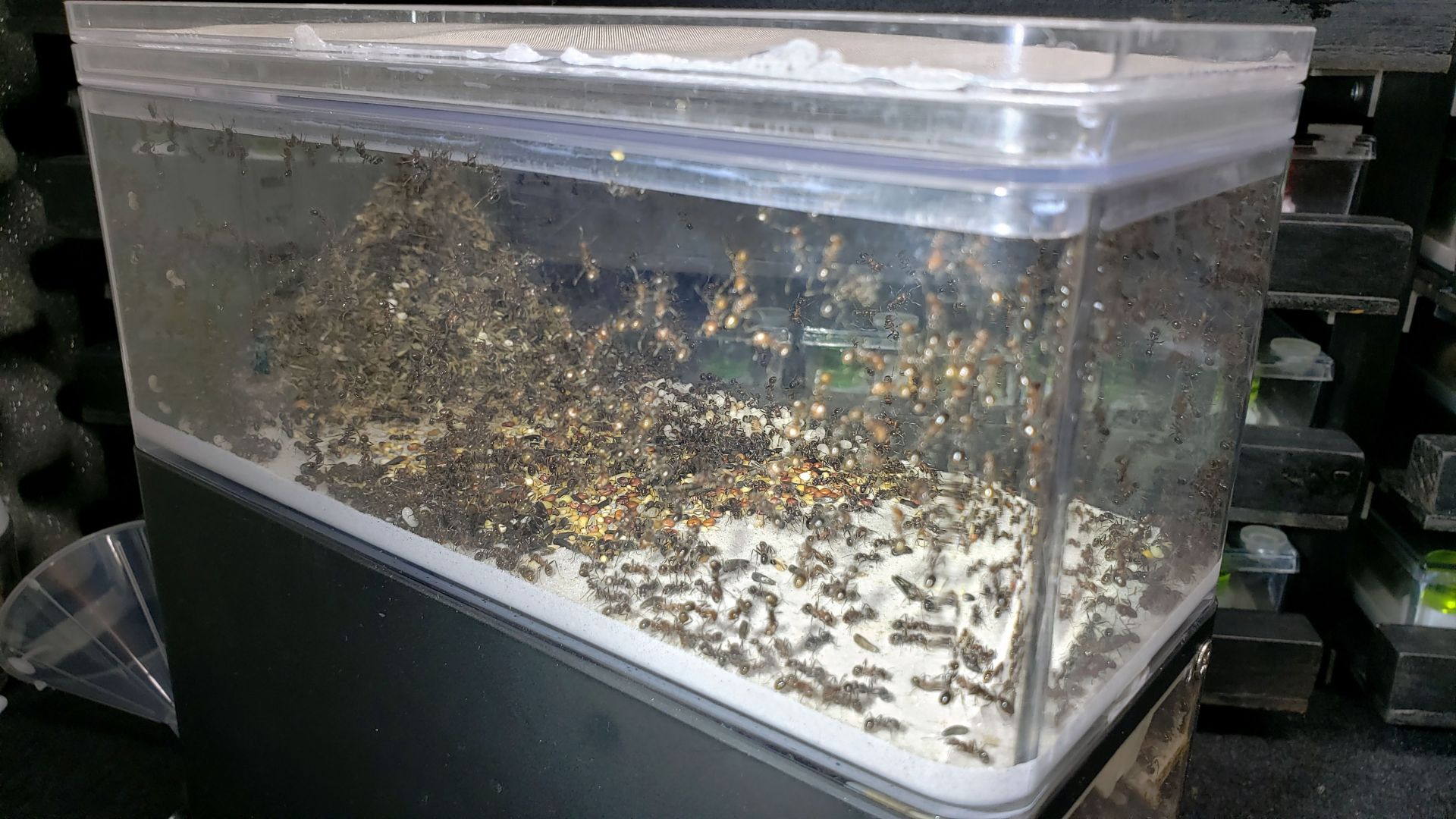
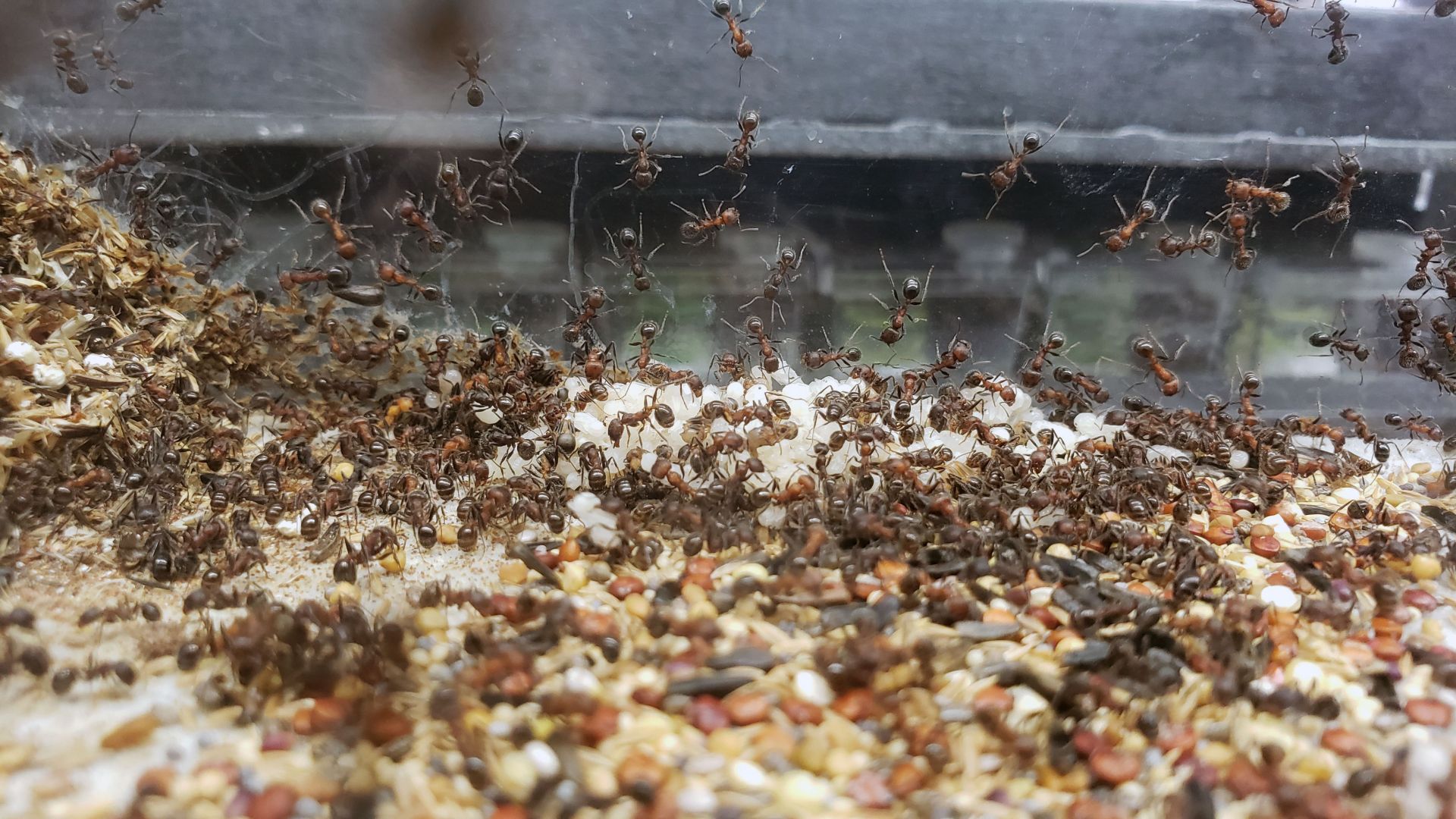
These workers on average are a lot larger than V. pergandei workers because they don't have lots of small workers along with some much larger ones like V. pergandei do, instead they are all fairly large. Because of this, they are really filling up the formicarium fast. I'm not sure what I'm going to move them into, because I don't have anything larger than these prototype formicariums right now, except for dirt nests, which I will not put them in because of how much they dig; they would basically keep digging until all the dirt is gone.
What seeds do you feed your V. andrei Drew?
What seeds do you feed your V. andrei Drew?
The ones in the mix that I sell here (https://www.formicul...eping-products/).
Kentucky Bluegrass Seed, Nyjer Seed, Amaranth Seed, Millet Seed, Red Quinoa Seed, Chia Seed, Poppy Seed, Alfalfa Seed, Clover Seed, Celery Seed, Wildflower Seed, White Quinoa Seed, Black Quinoa Seed, Other Grass Seed
Update 1-11-2020
The colony is now up to somewhere around 1700 workers, and was completely overwhelming the formicarium it was in. I don't have anything larger than my vertical prototype formicariums, so I had to come up with something. I decided to take all of the vacant fungus-grower formicarium chambers I had and put them together to form a much larger nest.
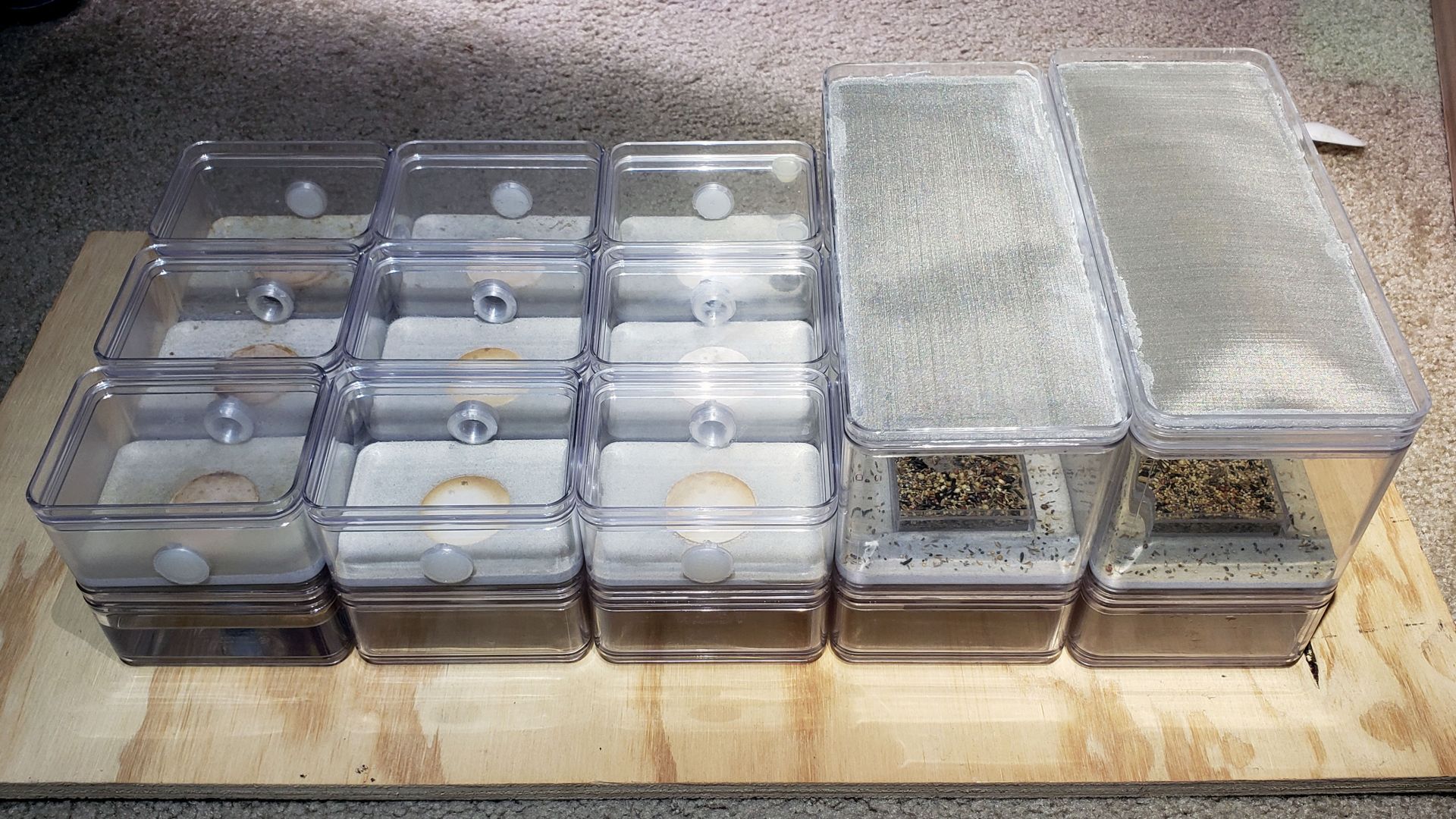
These first three chambers are the only ones I am actually hydrating.
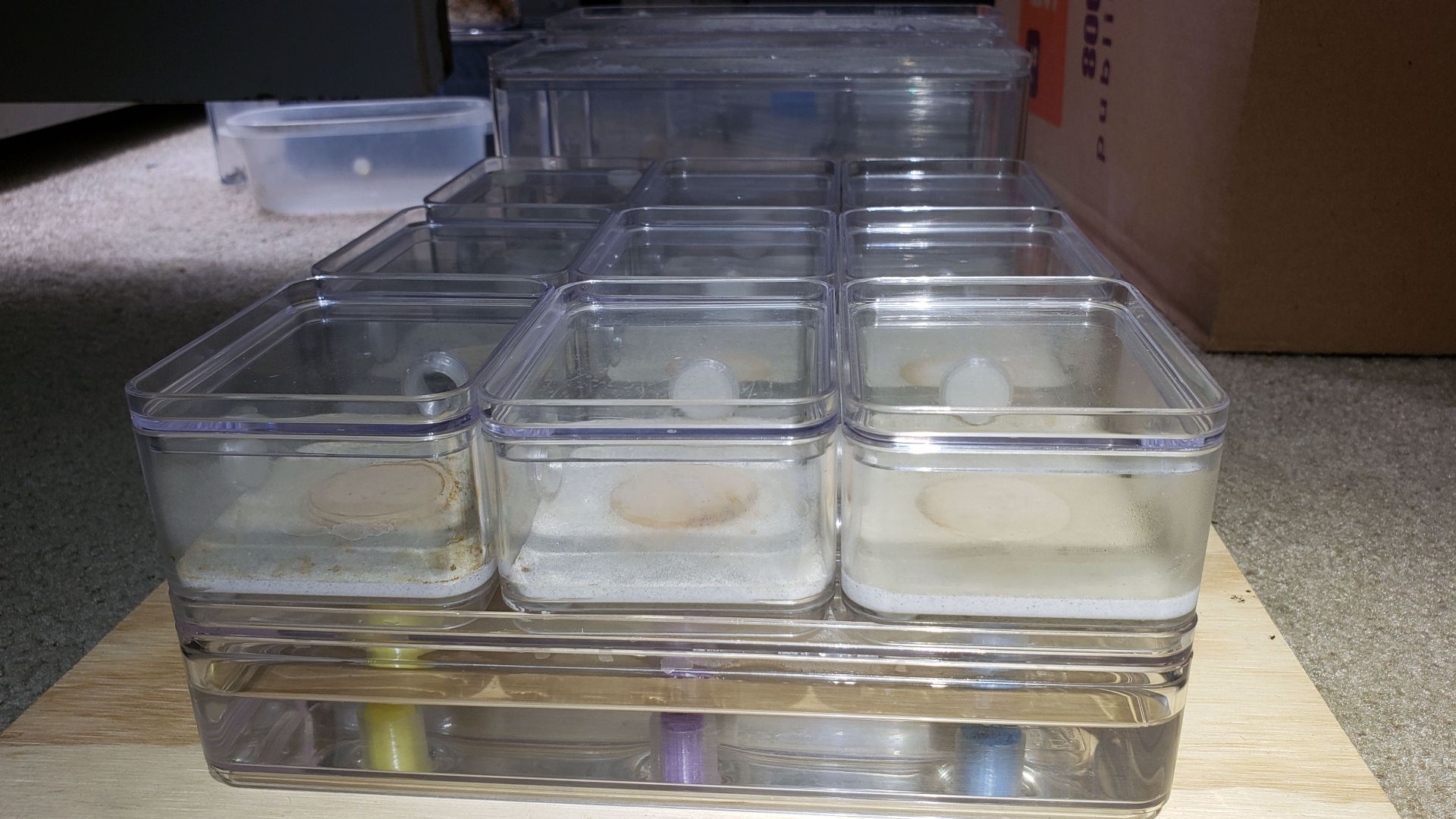
Two of these old failed large starter formicarium prototypes will be used for the foraging area. I guess the nest portions in them will make nice seed trays.
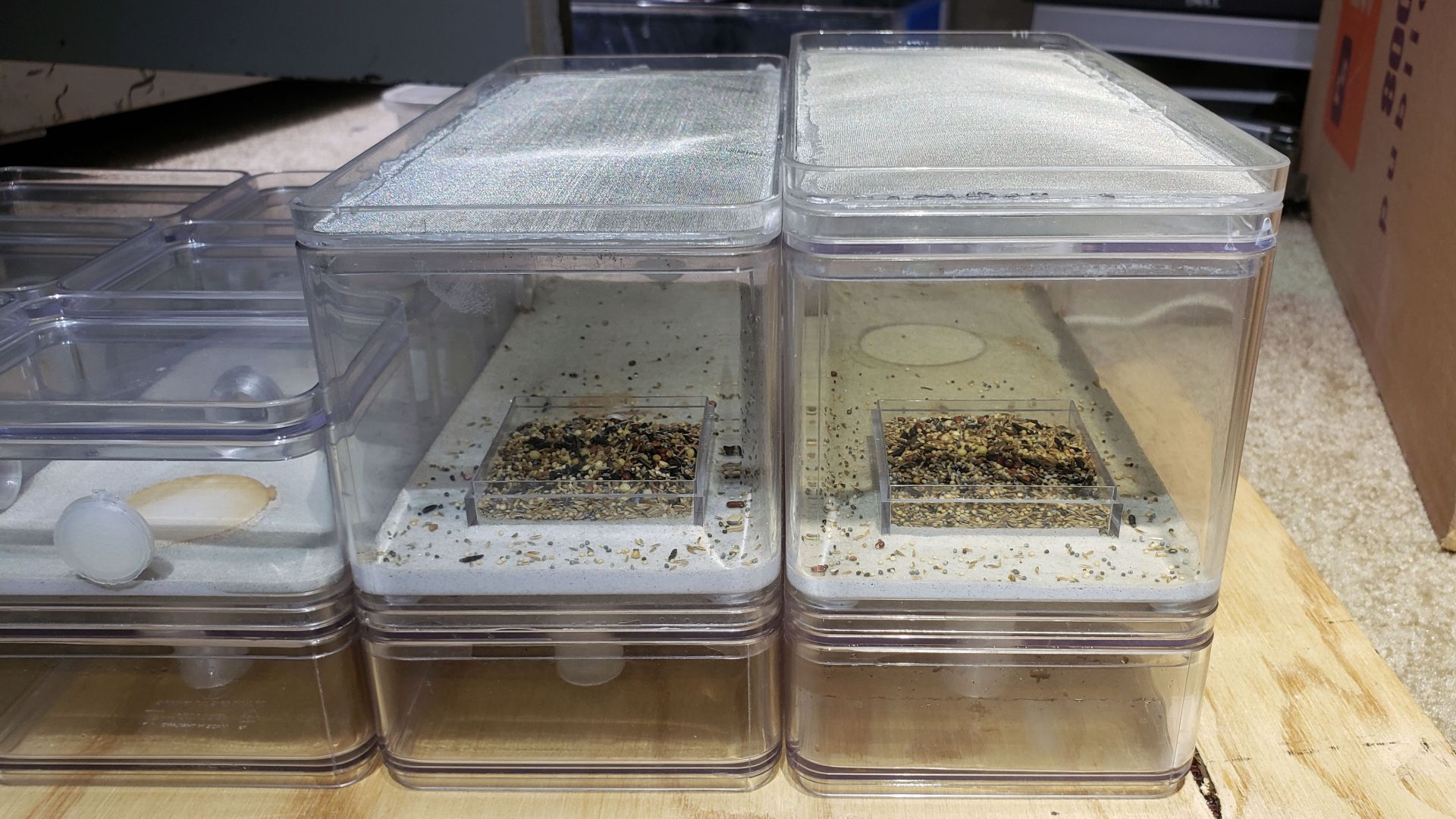
I put the current formicarium in a Fluon-coated tub and opened the lid.
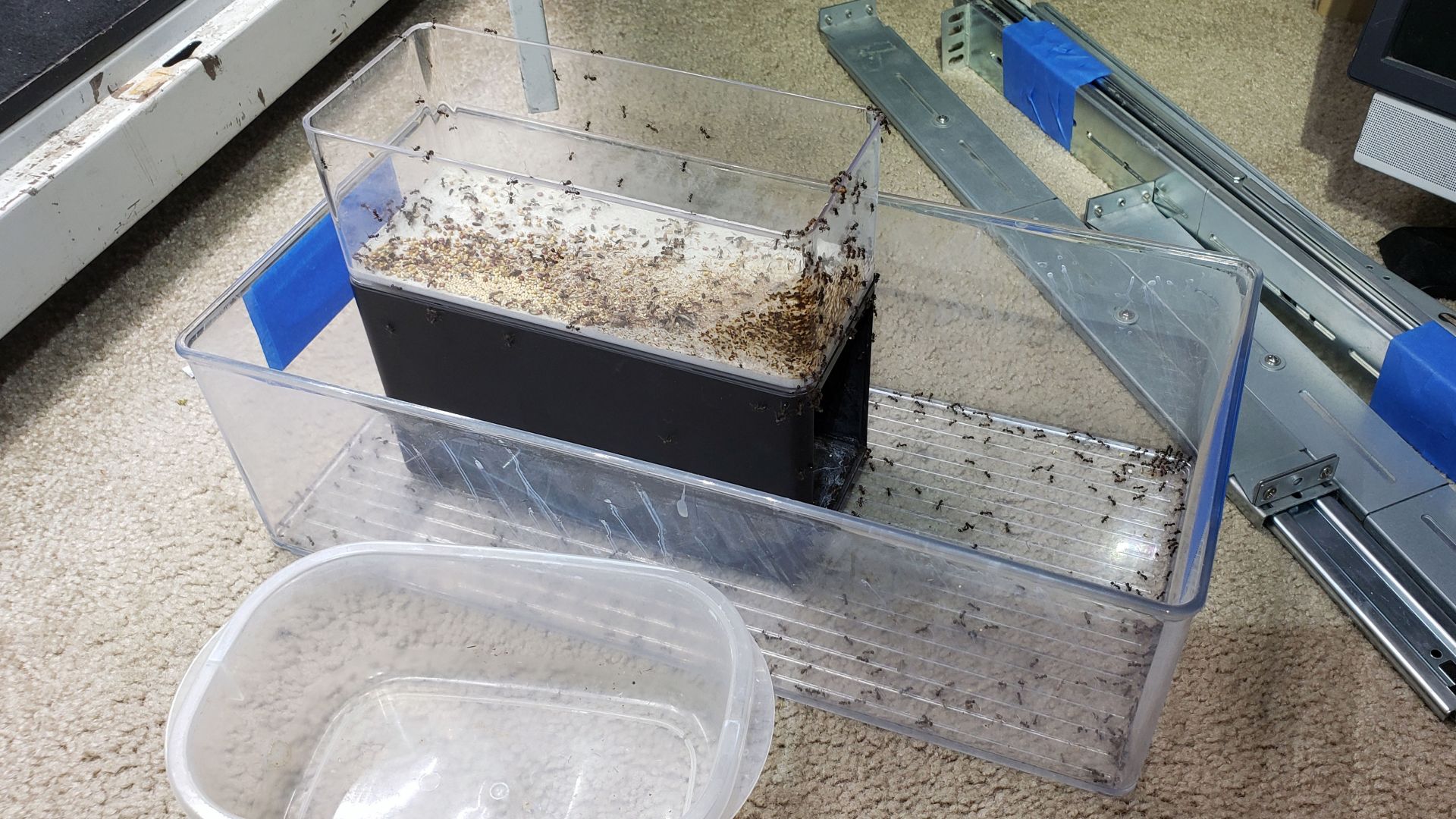
This is after pulling the foraging container off. You can see how quickly they started grabbing the brood and moving it under the tray that the water tank sits in.
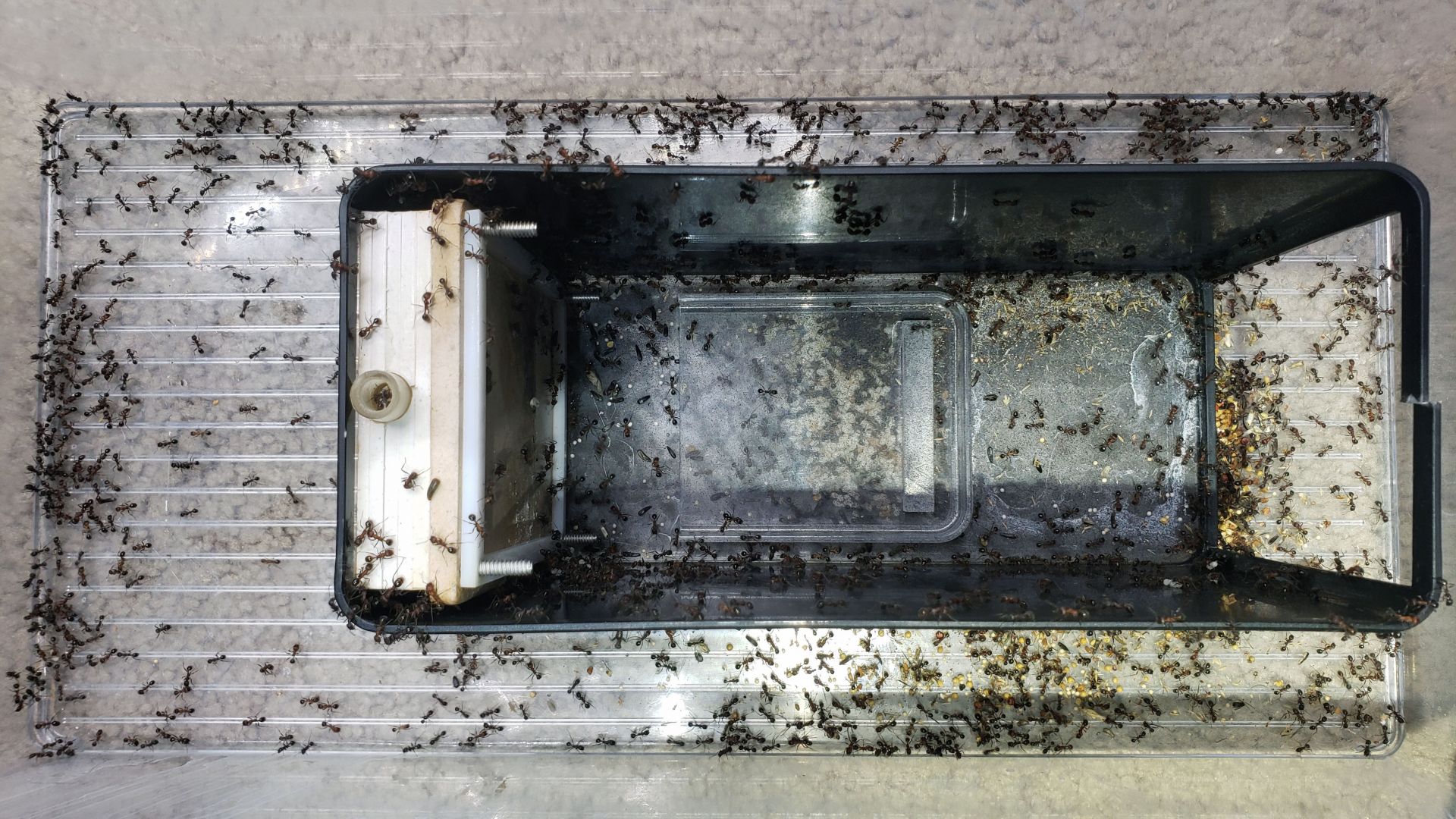
There were too many ants to try to pick the nest up to brush them off. That's normally what I would do while a number of them crawl on my hands and bite me, but with this many, they would have been all over me. Instead I just used my homemade power aspirator/mini shop vacuum to suck up as many as I could first.
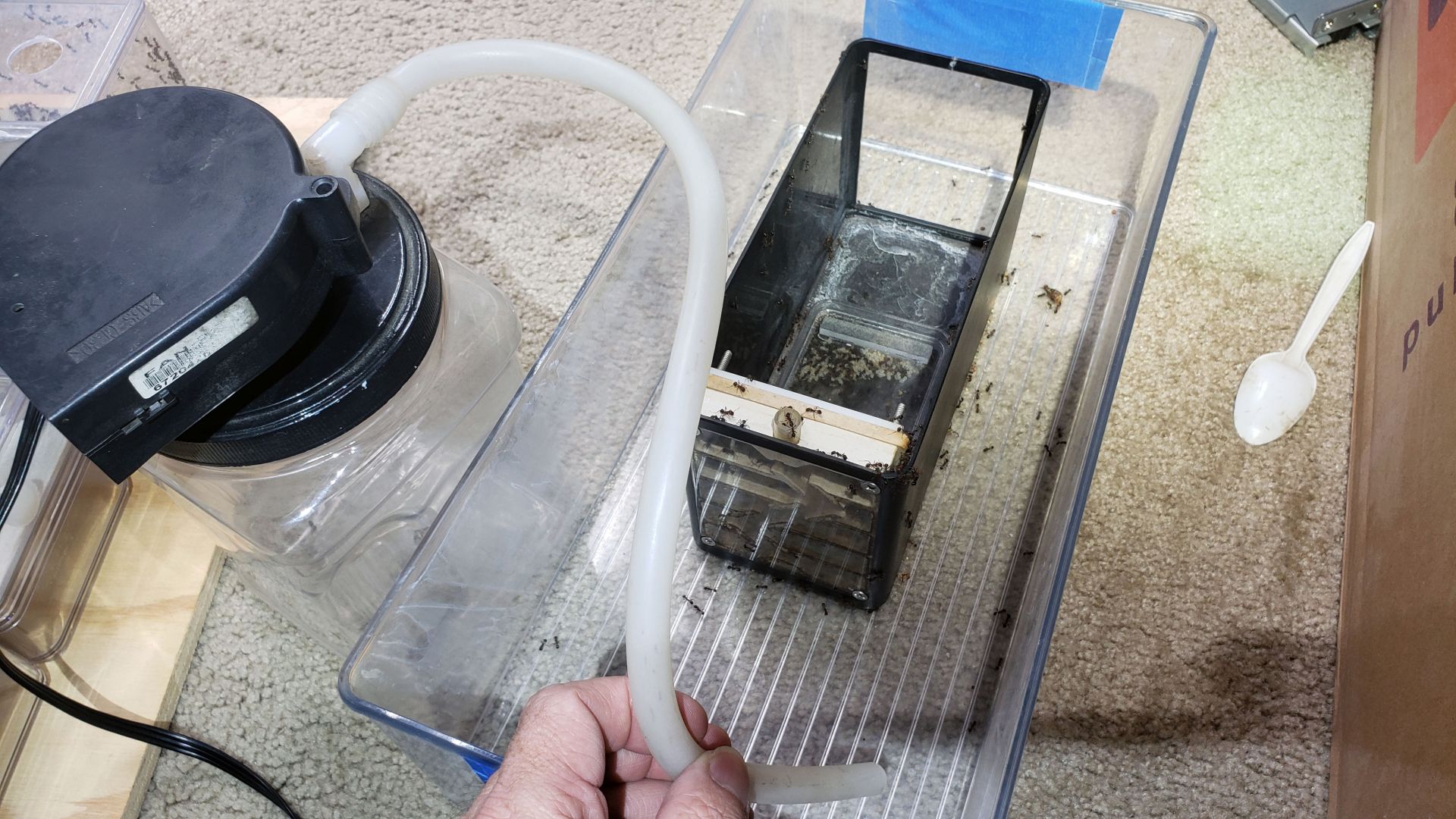
Here they are in their new home for now. This should make managing them much easier until I make a large permanent formicarium for them.
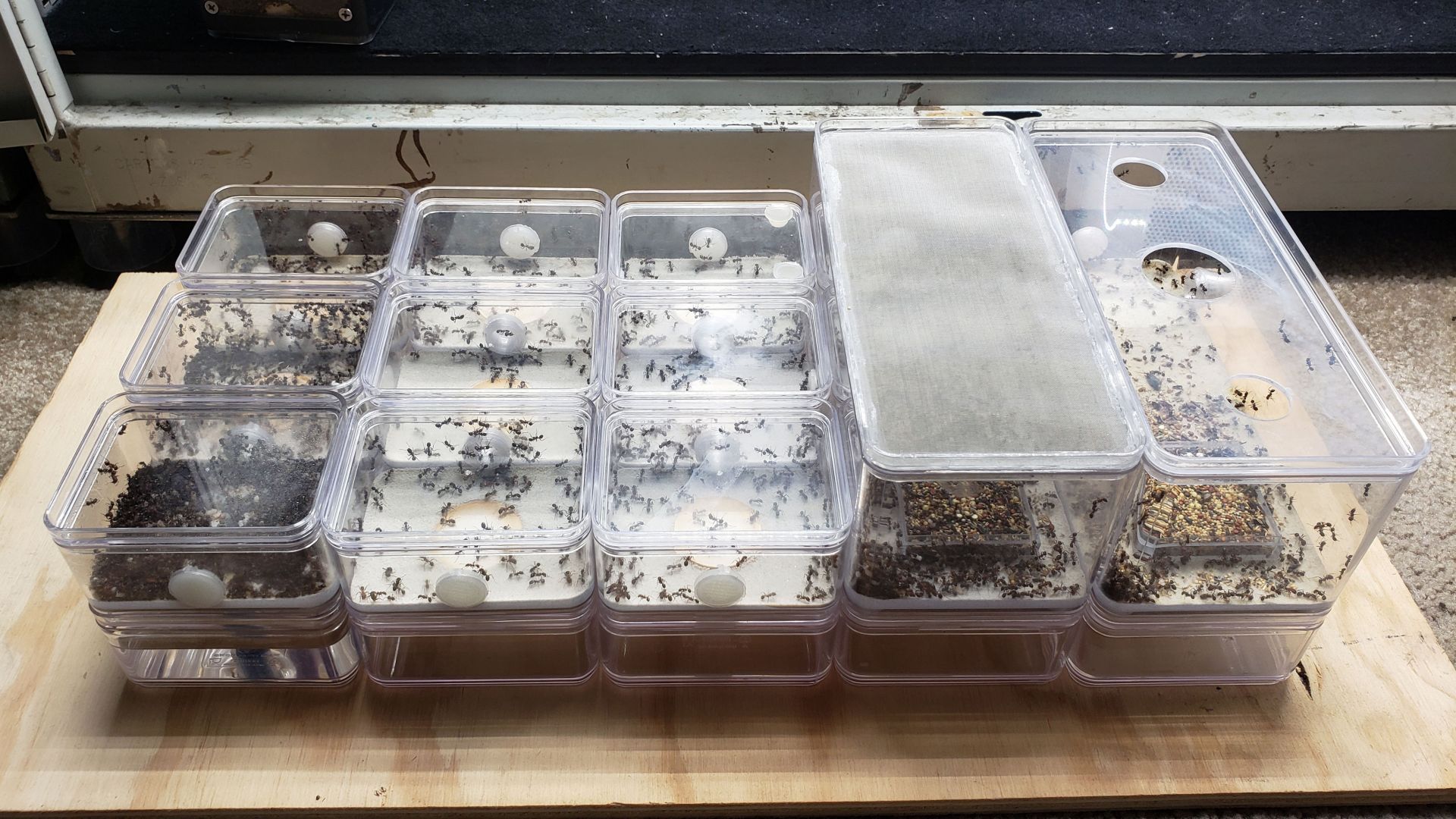
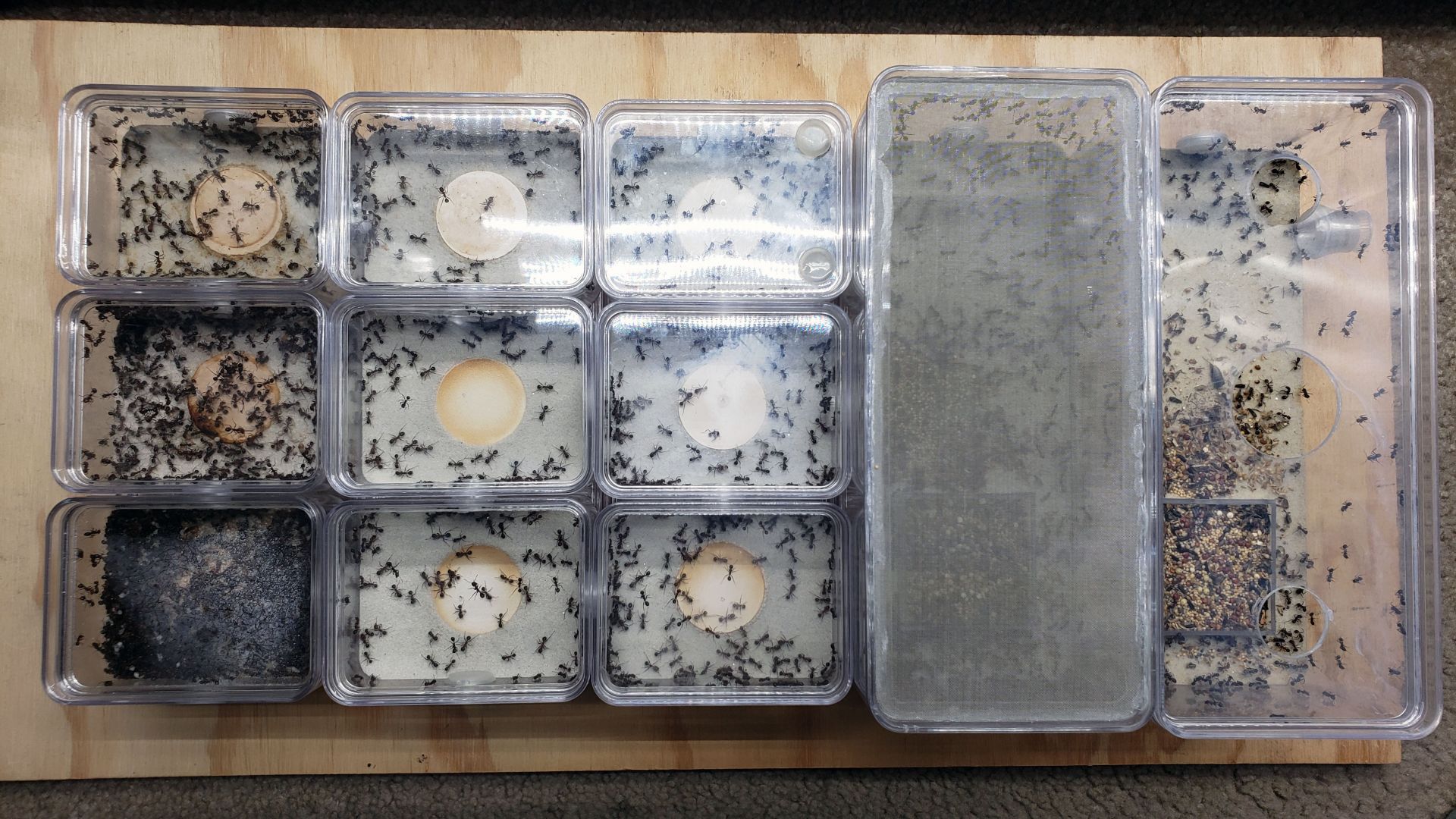
Update 5-14-2020
This colony is growing out of control. At this point I would estimate about 5000 workers. I have looked the formicarium over very thoroughly for any week points. If these things got loose, it would be a mess!
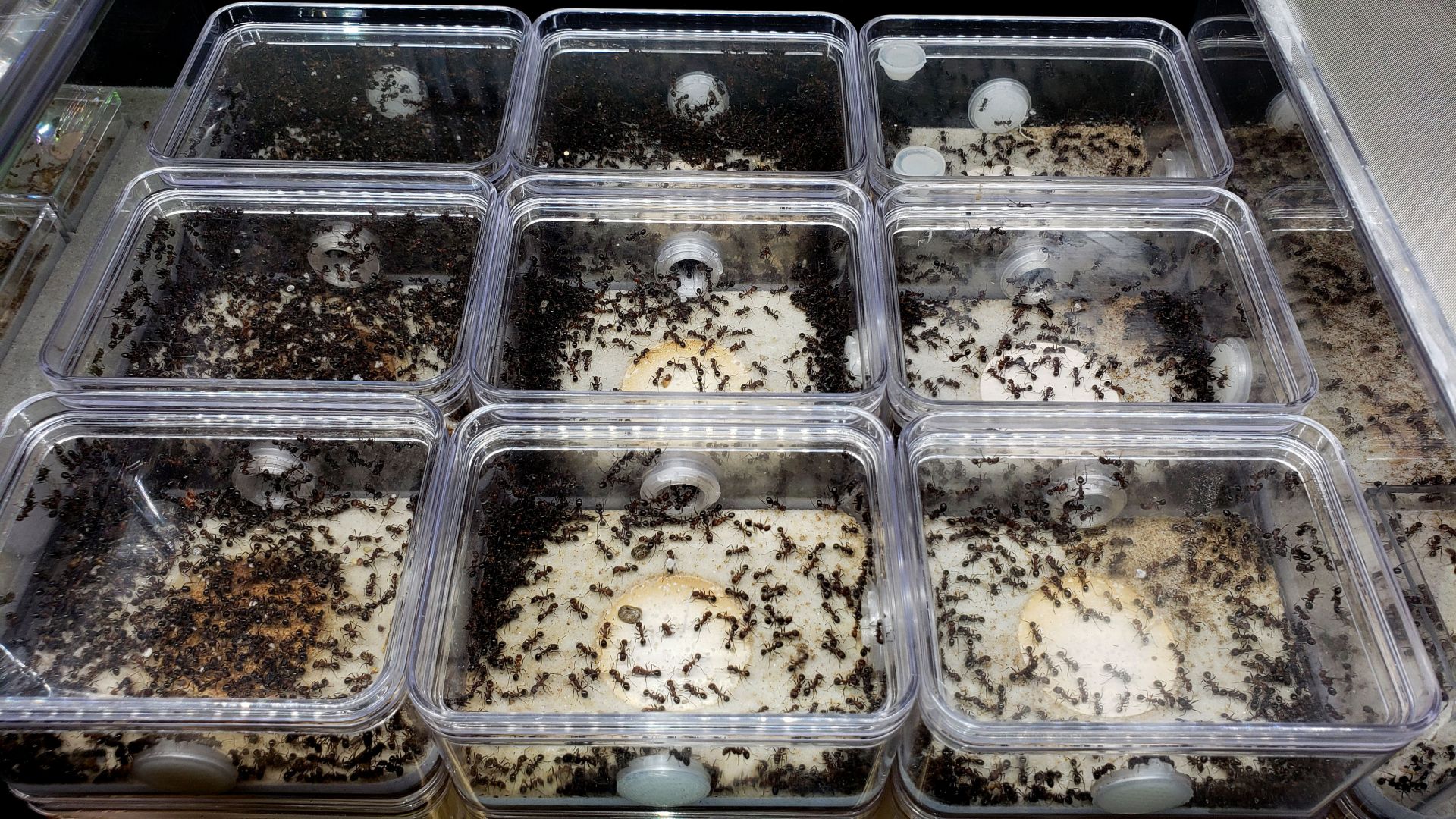
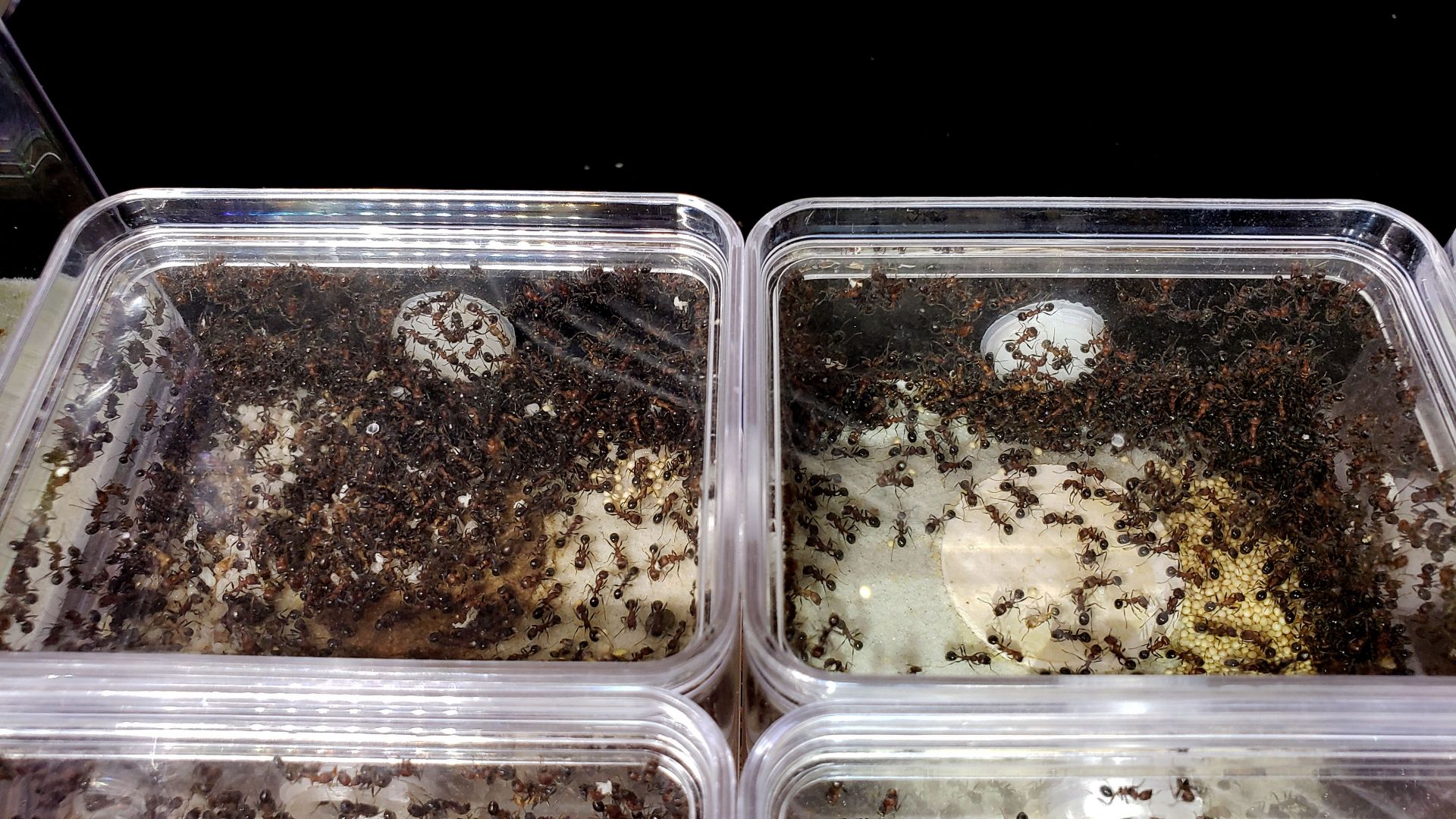
I actually found the queen. ![]()
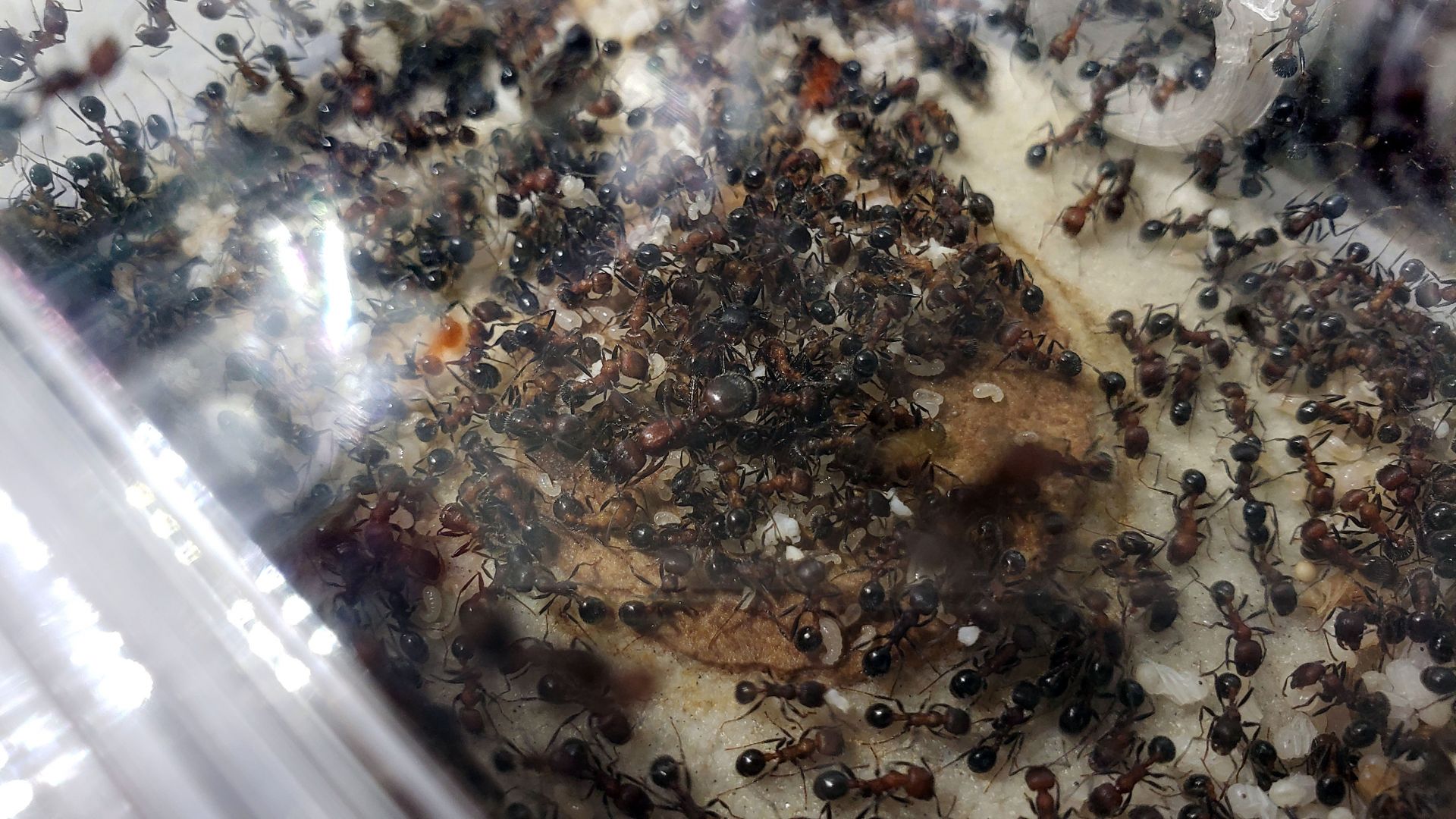
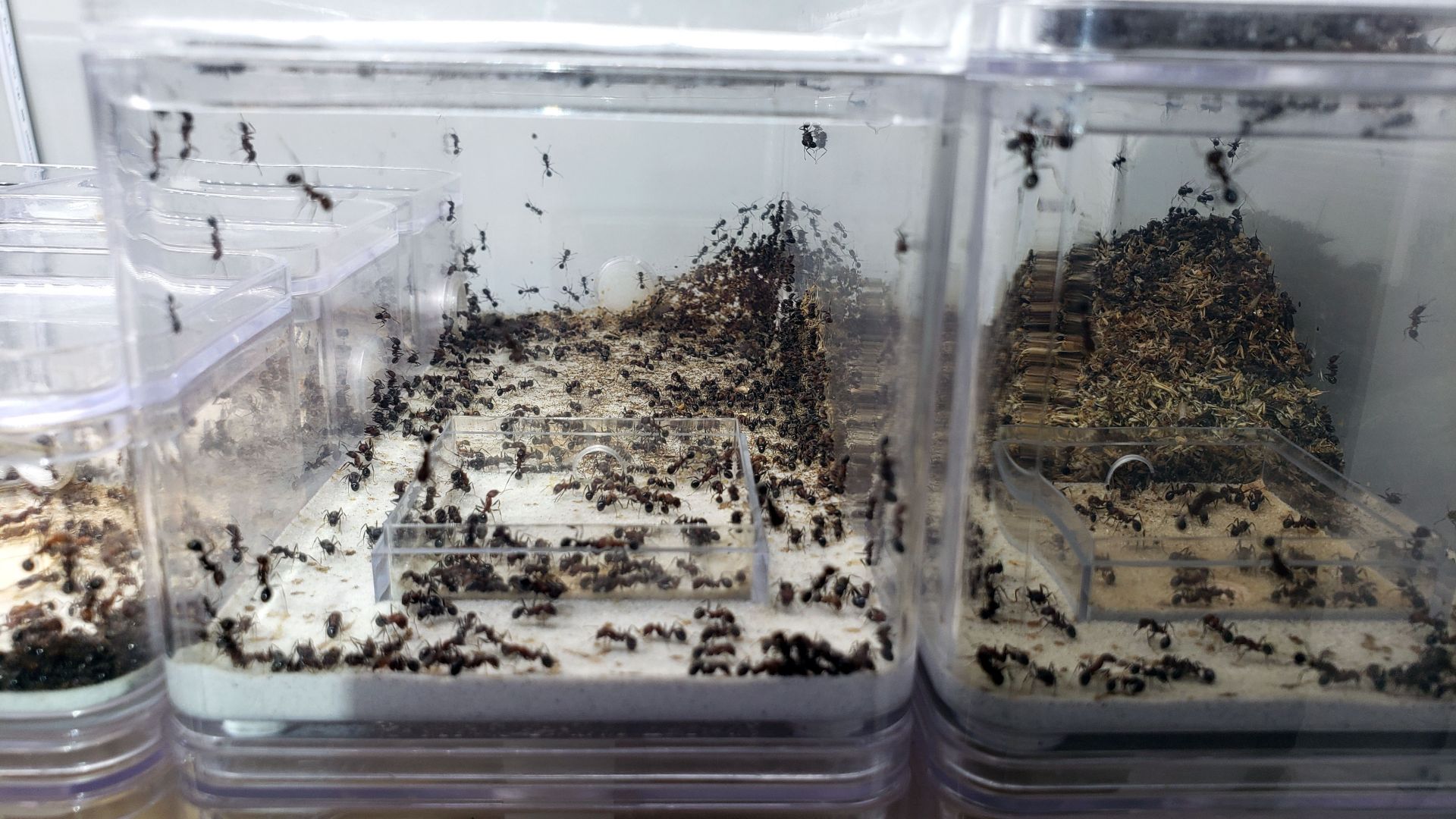
Just like the V. pergandei, these guys don't waste any seeds. Look how huge that trash pile is, and it's almost nothing but seed husks. It actually looks just like what you see piled all around their nest entrances in the wild.
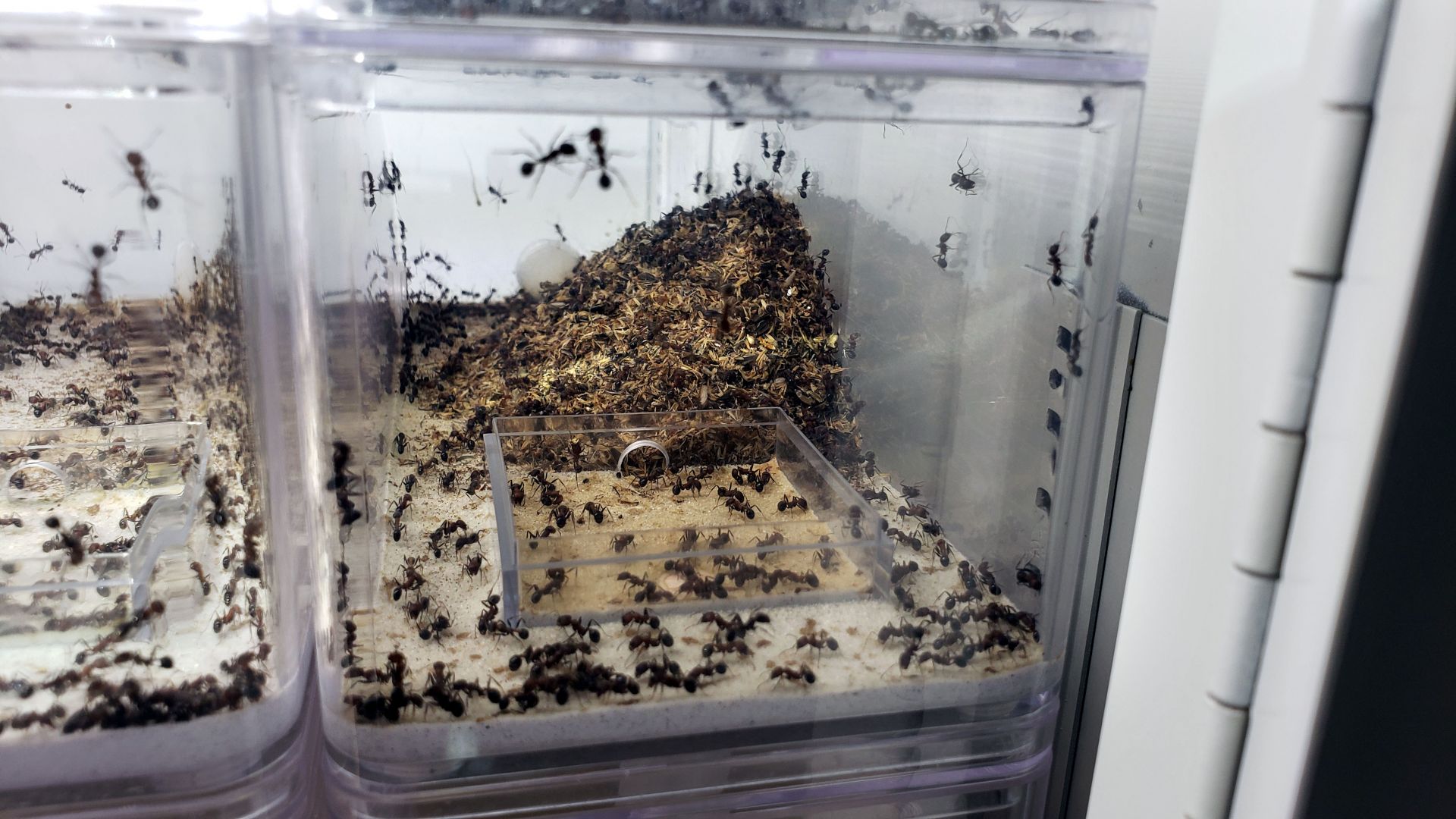
They are all over the place!
Ants I have: Tapinoma sessile(2 queen colony). RED MORPH Camponotus neacticus(now has pupae!), Tetramorium immigrans (x3), Aphaenogaster sp, Temnothorax sp, Brachymyrmex sp. possibly infertile ![]() , Ponera pennsylvanica, and Pheidole morrisi!
, Ponera pennsylvanica, and Pheidole morrisi! ![]()
Other insects: Polistes sp. Queen
Ants I need: Pheidole sp., Trachymyrmex sp., Crematogaster cerasi , Dorymyrmex sp. Most wanted: Pheidole morrisii
that's crazy dude, I wish we had these in ohio, also are these polygene? you should test it out lol which would be awesome
that's crazy dude, I wish we had these in ohio, also are these polygene? you should test it out lol which would be awesome
Pogonomyrmex occidentalis colonies can get several times larger than this, even though they're not polygynous.
"God made..... all the creatures that move along the ground according to their kinds (including ants). And God saw that it was good. Genesis 1:25 NIV version
Keeping:
Tetramorium immigrans Camponotus vicinus, modoc, novaeboracensis, herculeanus
Formica pallidefulva, argentea Solenopsis molesta
Formica cf. aserva Lasius brevicornis, neoniger
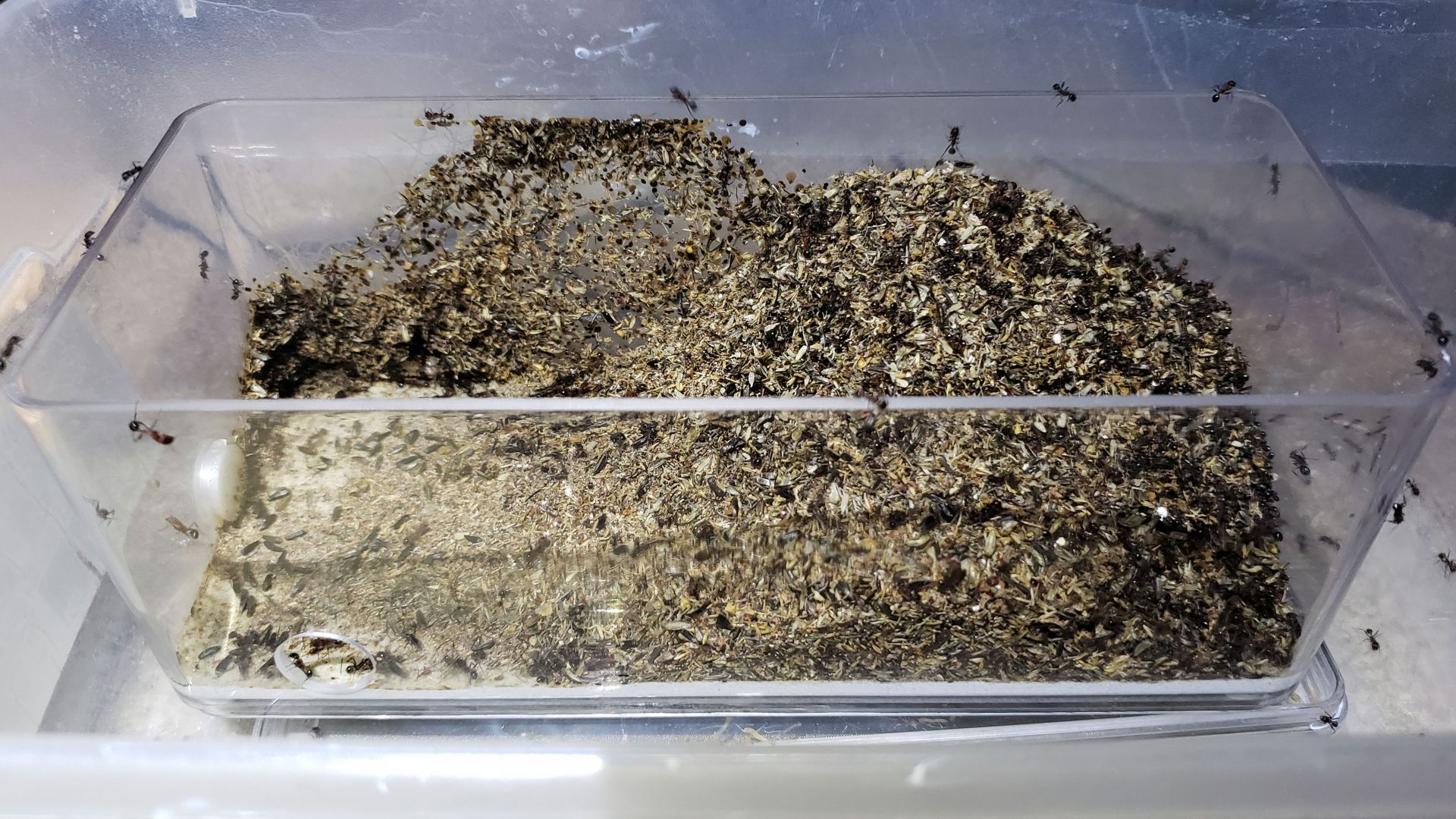
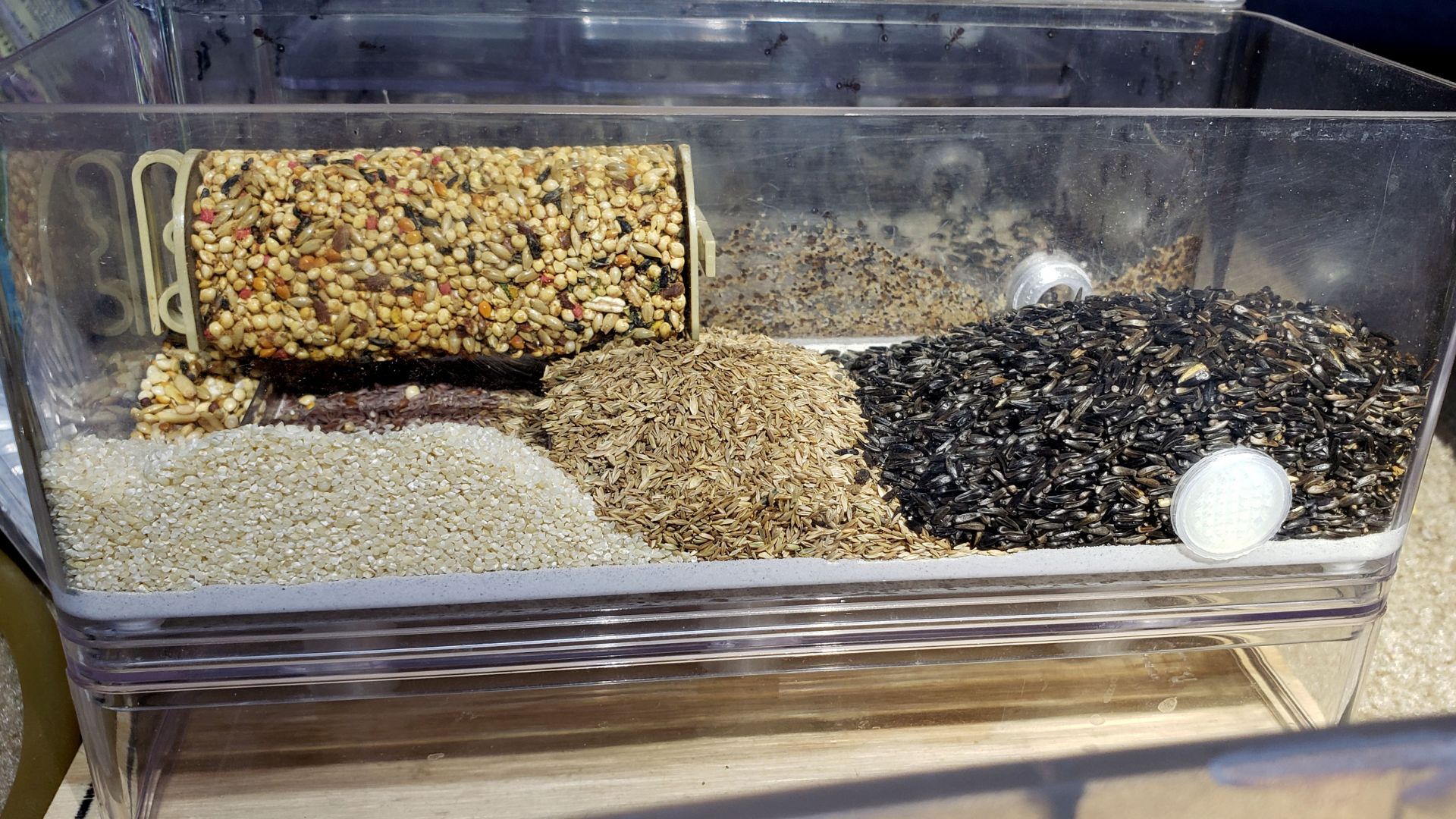
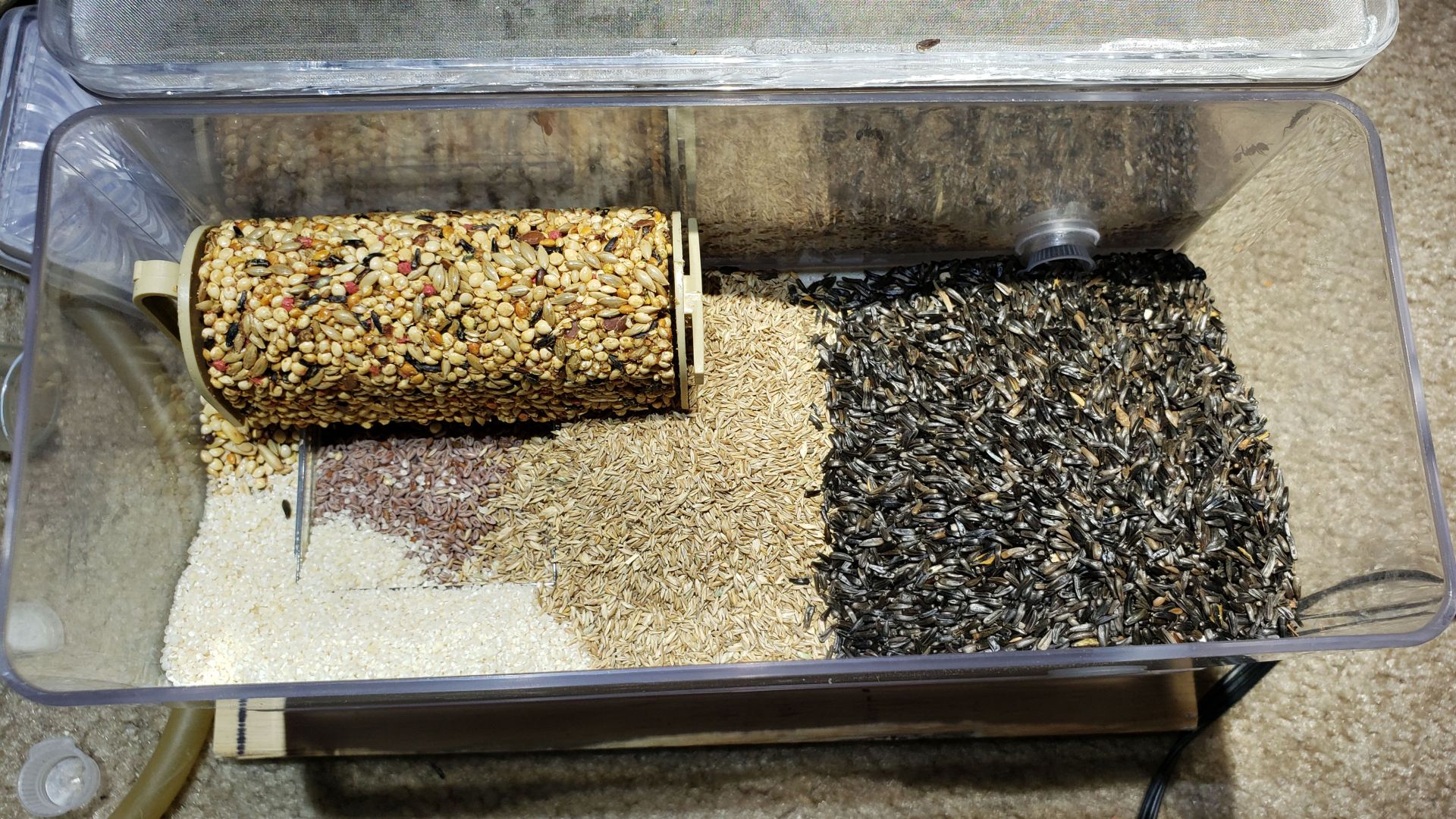
Oh!! I recognize that bird treat. I was debating offering my ants leftover Avi-cakes from my deceased pet. Let us know how that goes!
Past & Present
Veromessor pergandei, andrei, stoddardi; Novomessor cockerelli
Camponotus fragilis, Camponotus sansabeanus (inactive), vicinus, laevigatus/quercicola, CA02
Pogonomyrmex subnitidus, P. californicus (inactive)
Liometopum occidentale (inactive); Prenolepis imparis; Myrmecocystus mexicanus (inactive); Tetramorium sp. (inactive); Lasius sp.
Termites: Zootermopsis angusticollis, and a box of drywood termites that can't be seen
Isopods: (most no longer keeping) A. gestroi, granulatum, kluugi, maculatum, vulgare; C. murina; P. hoffmannseggi, P. haasi, P. ornatus; V. parvus, P. pruinosus, T. tomentosa
Spoods: (no longer keeping) Phidippus sp., other
Oh, and those pale white trails on the walls - are those possibly related to the resin? I believe I've seen them with V. pergandei and I thought it was from ants crawling over wet Fluon and tracking it around, but now I kind of wonder.
And finally, an electric aspirator is exactly what I've been pondering lately. What vacuum did you use? I was thinking of a compact keyboard vacuum.
Edited by OhNoNotAgain, July 19 2020 - 6:18 PM.
Past & Present
Veromessor pergandei, andrei, stoddardi; Novomessor cockerelli
Camponotus fragilis, Camponotus sansabeanus (inactive), vicinus, laevigatus/quercicola, CA02
Pogonomyrmex subnitidus, P. californicus (inactive)
Liometopum occidentale (inactive); Prenolepis imparis; Myrmecocystus mexicanus (inactive); Tetramorium sp. (inactive); Lasius sp.
Termites: Zootermopsis angusticollis, and a box of drywood termites that can't be seen
Isopods: (most no longer keeping) A. gestroi, granulatum, kluugi, maculatum, vulgare; C. murina; P. hoffmannseggi, P. haasi, P. ornatus; V. parvus, P. pruinosus, T. tomentosa
Spoods: (no longer keeping) Phidippus sp., other
Update 9-19-2020
About a month ago, I realized I had completely forgotten to fill the water tank on this colony's formicarium. The majority of the colony died, leaving behind just a couple hundred workers, and the queen thankfully.
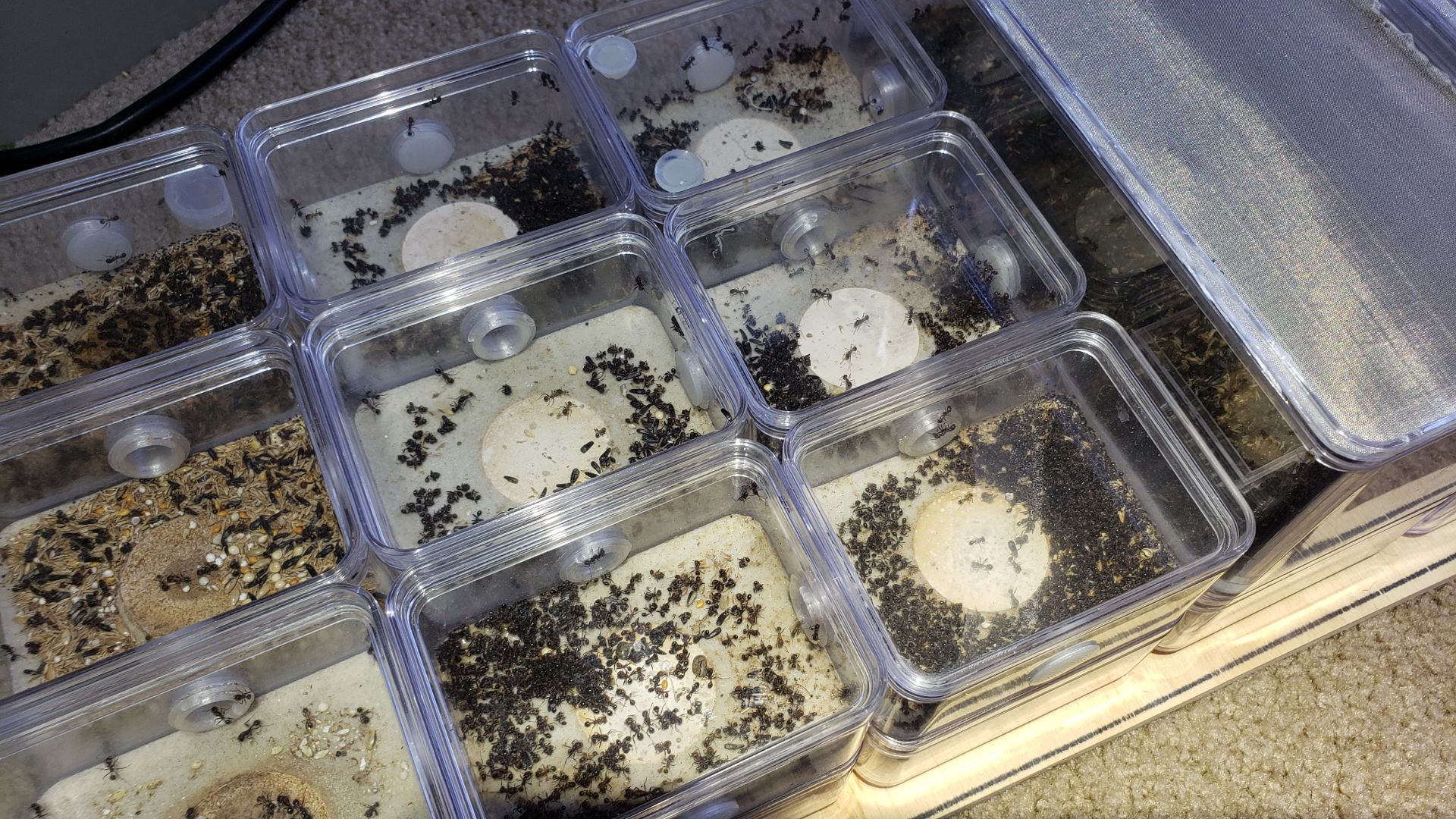
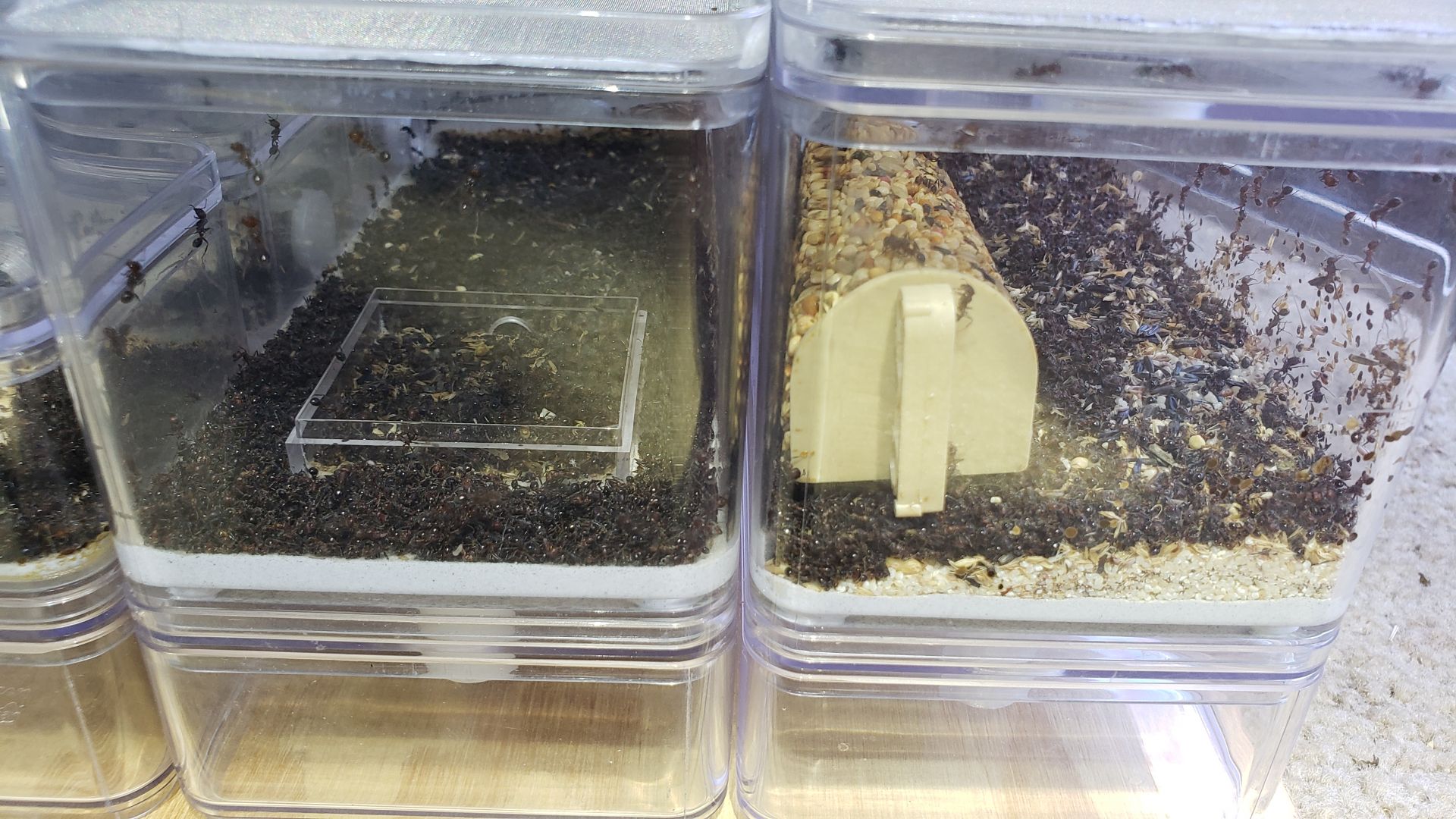
The colony is growing again and making lots of new brood, so it looks like they are recovering.
Update 9-19-2020
About a month ago, I realized I had completely forgotten to fill the water tank on this colony's formicarium. The majority of the colony died, leaving behind just a couple hundred workers, and the queen thankfully.
The colony is growing again and making lots of new brood, so it looks like they are recovering.
Oh no! I hope they recover well. Looking back at this journal, they look pretty resilent. Wishing you the best. ![]()
Update 12-20-2021
After I almost killed the entire colony on accident, they have made a full recovery, and are growing like crazy again.
Here you can see the remains of a dead gecko I gave them. They ate every last bit of flesh on it and there is nothing left but bones.
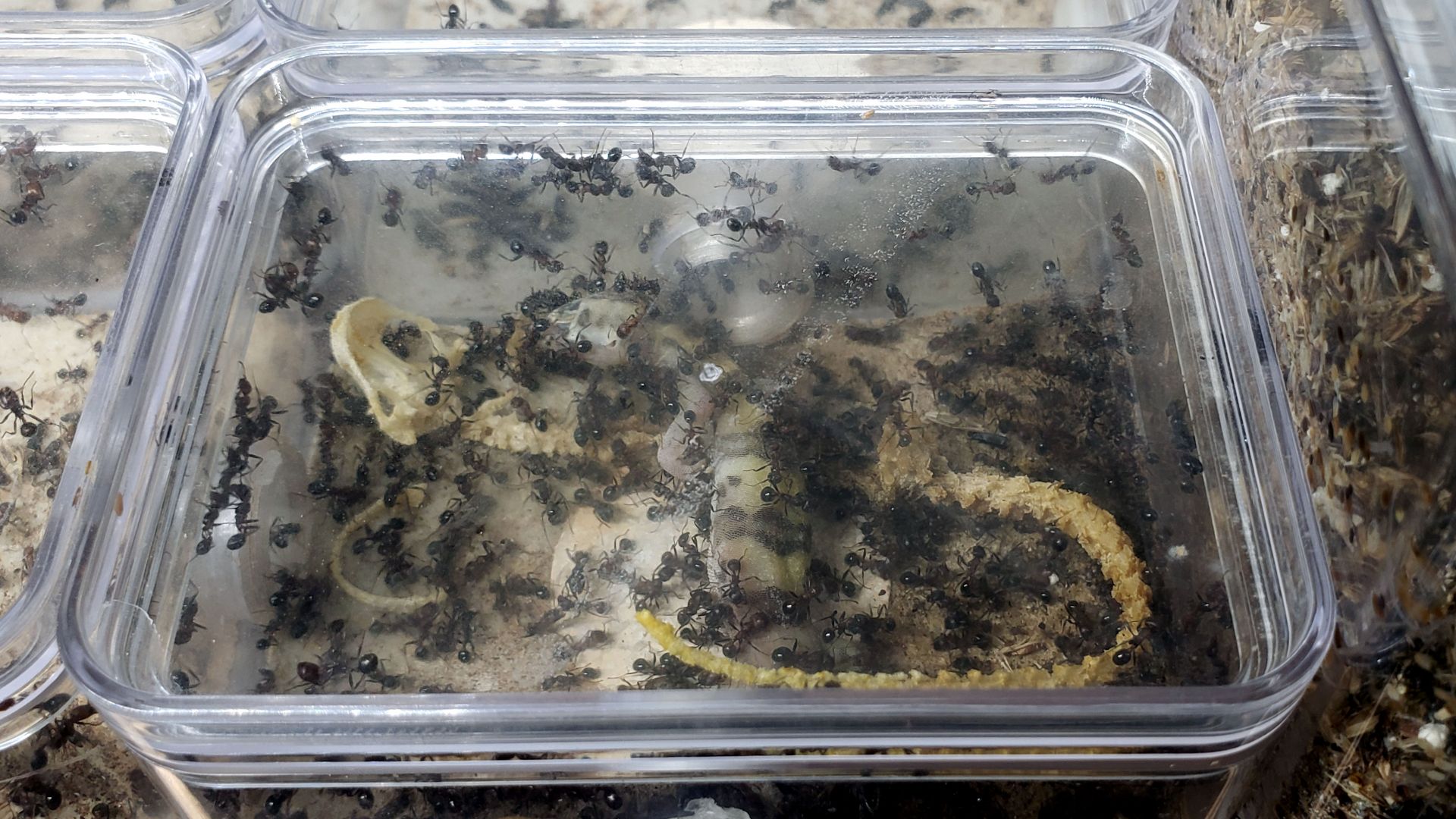
Their foraging containers are getting very full of trash and seed husks. In the wild they usually have a large amount of this stuff all around their nest entrances, making them very easy to recognize.
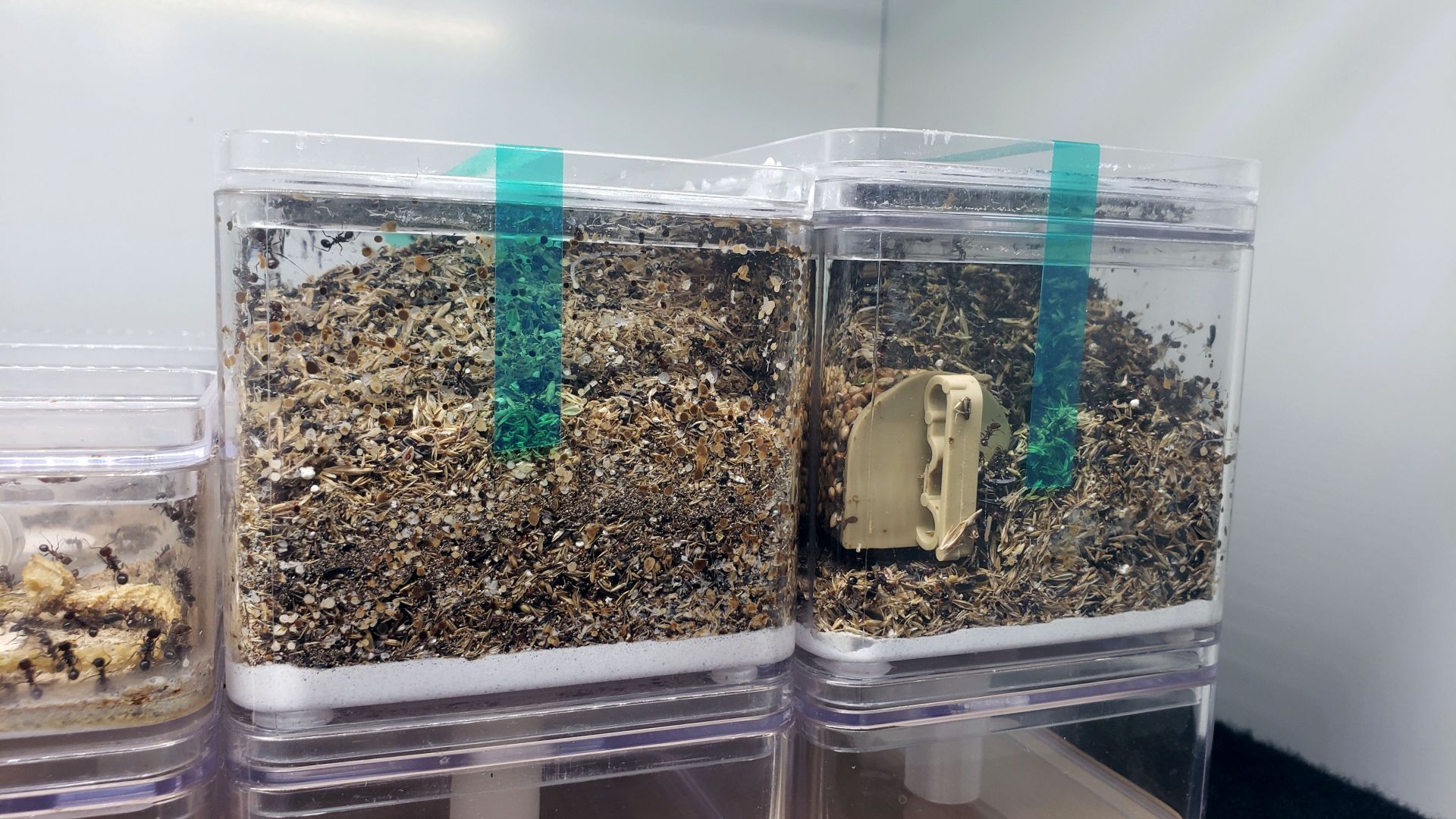
Update 3-25-2023
The colony has been growing like crazy and is now up to probably a few thousand workers. I moved it out of my ant room and into the cooler part of my apartment since these don't live in the desert and are probably used to a little cooler temperatures.
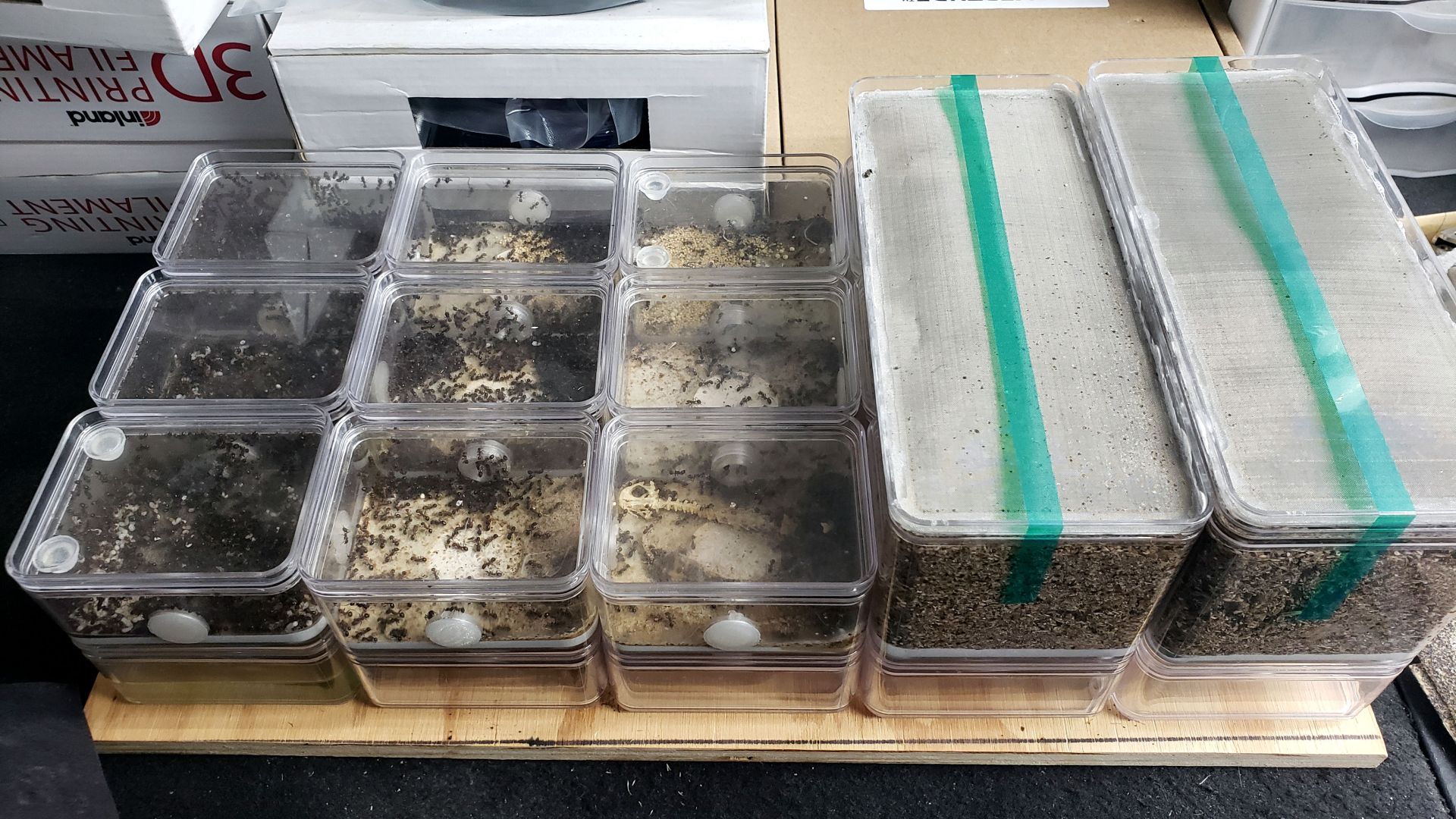
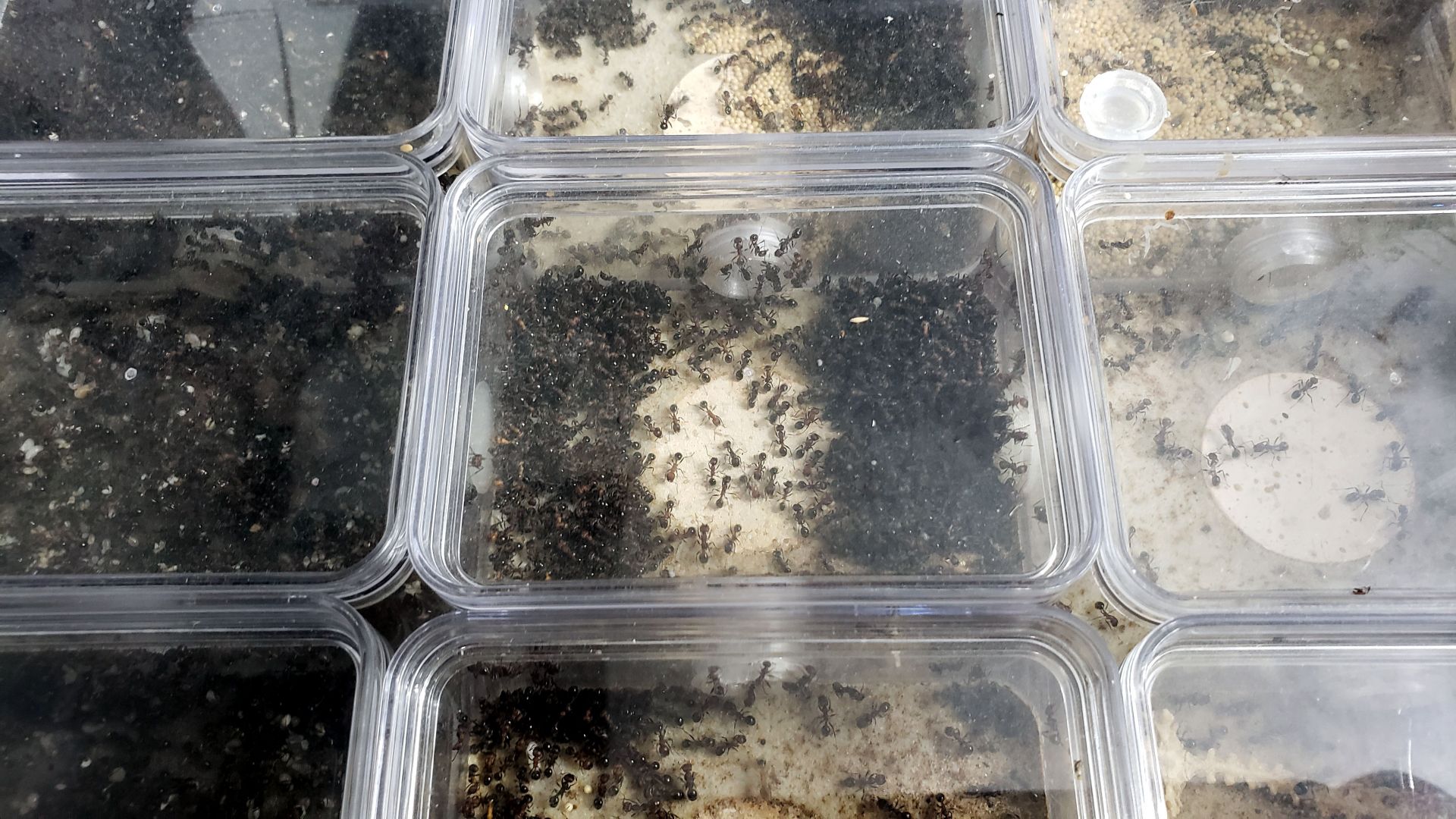
The foraging containers are almost completely full now and really need to be cleaned out.
I pulled them off and put them in a Fluon-coated tub.
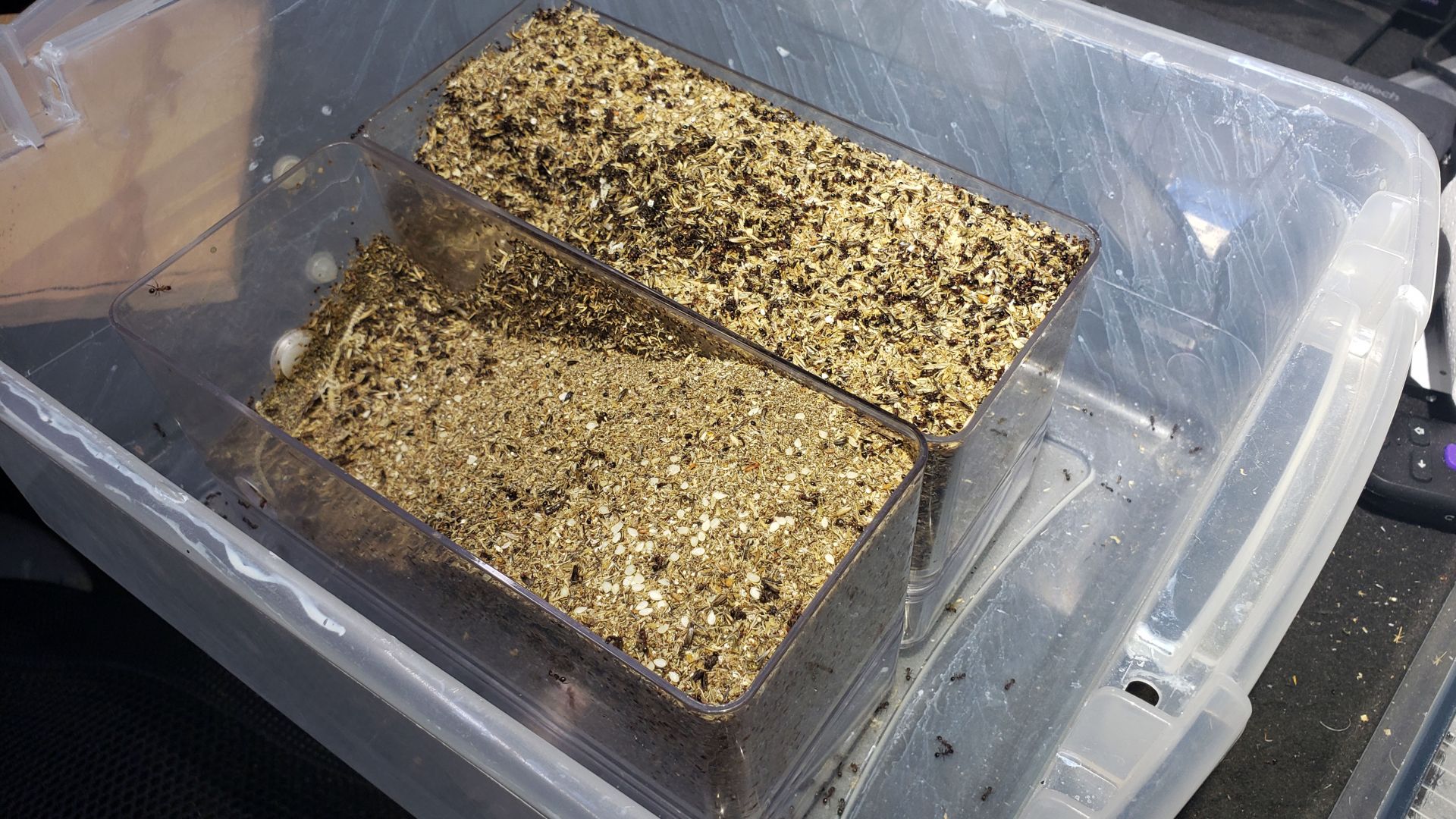
You can see some bones of a few other dead reptiles I gave them. They actually managed to drag them all the way into the foraging container to put in the trash pile.
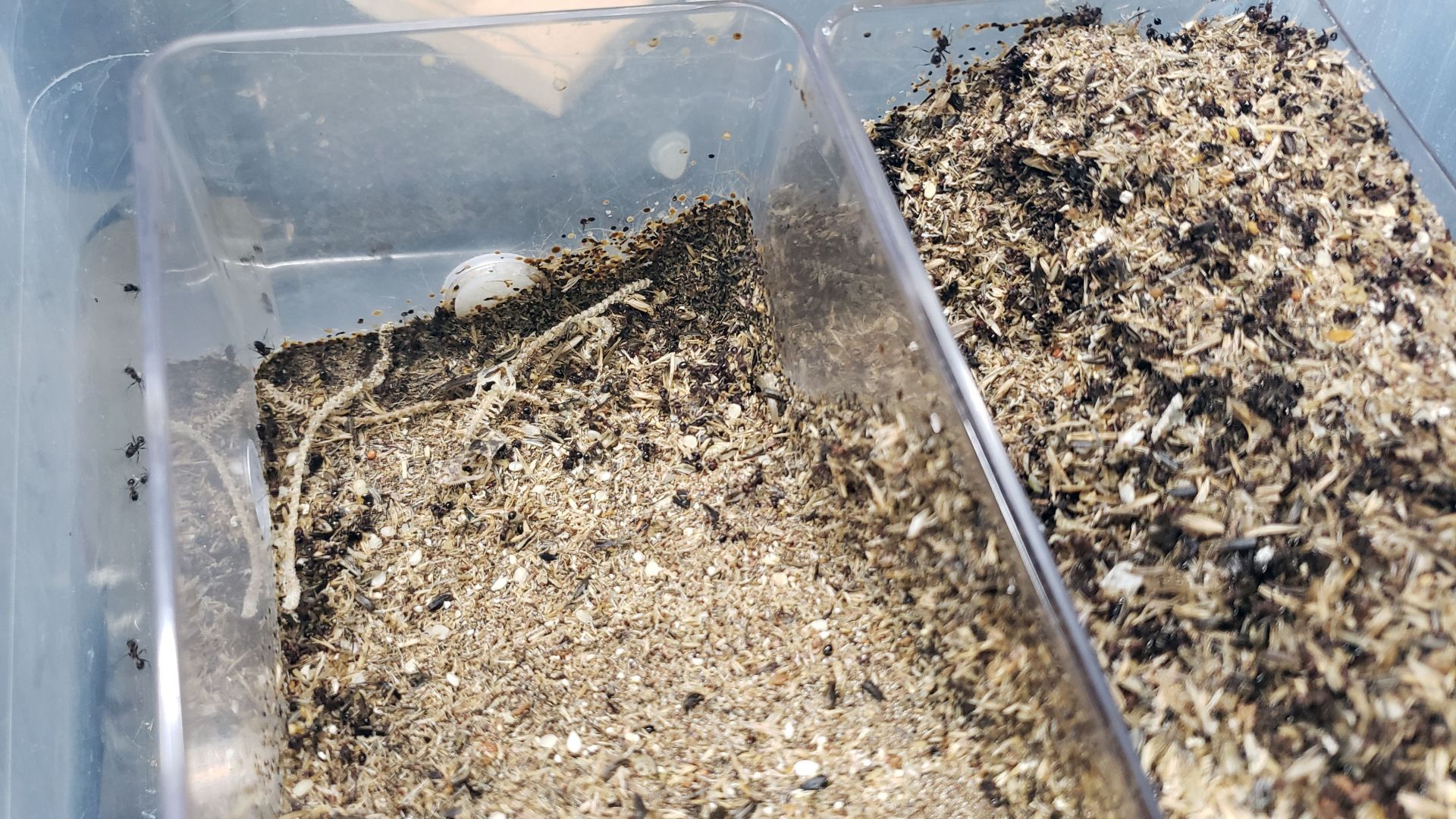
Once I removed all the live workers, I was able to dump them out. Look at the amount of seed husks these guys discarded! This is pretty much the amount I usually see around mature nests in the wild. Needless to say, they're burning through my seed mix at a crazy rate.
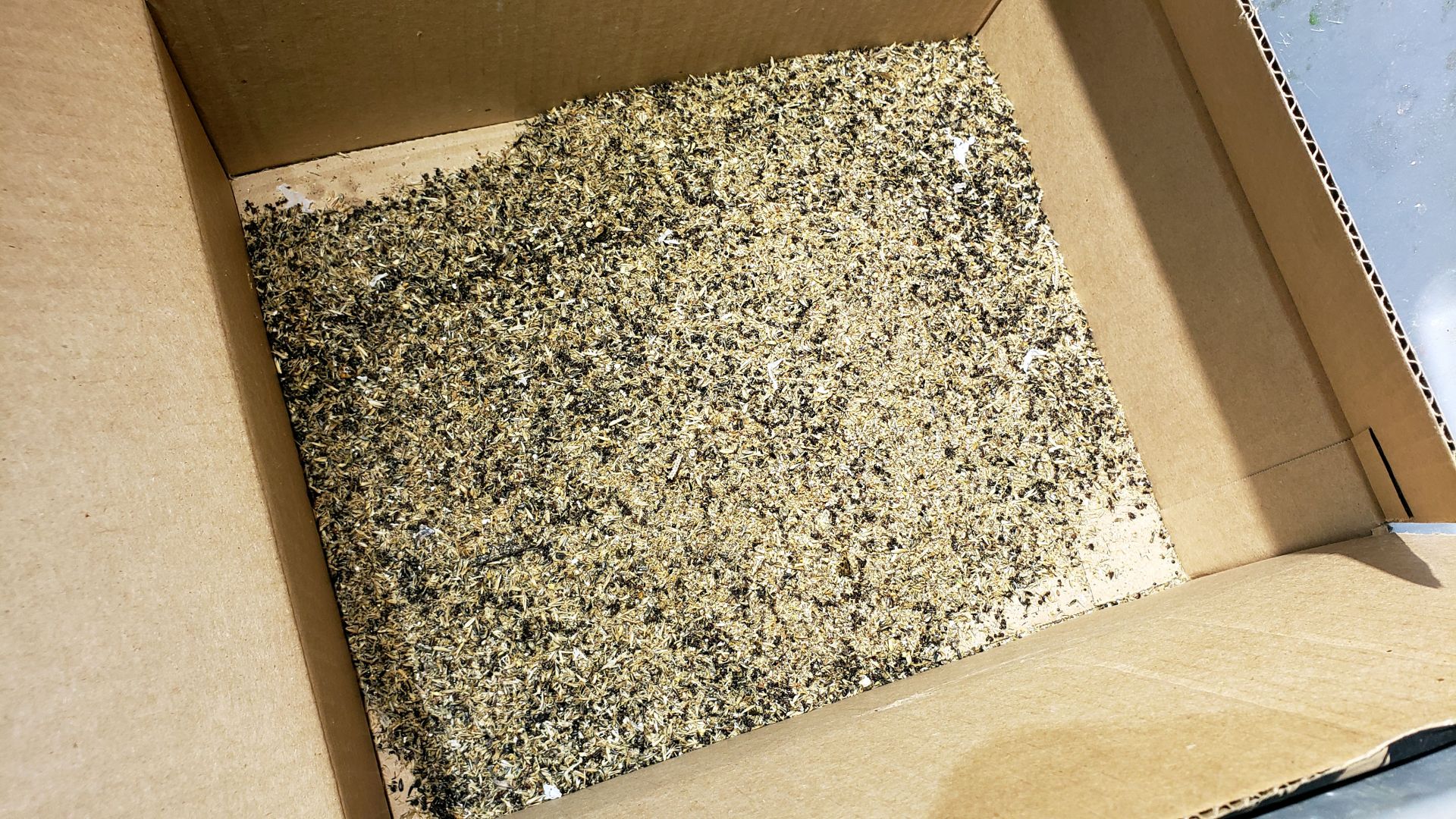
Again, they left behind all this thick resin like substance, which I'm pretty sure if just ant poop.
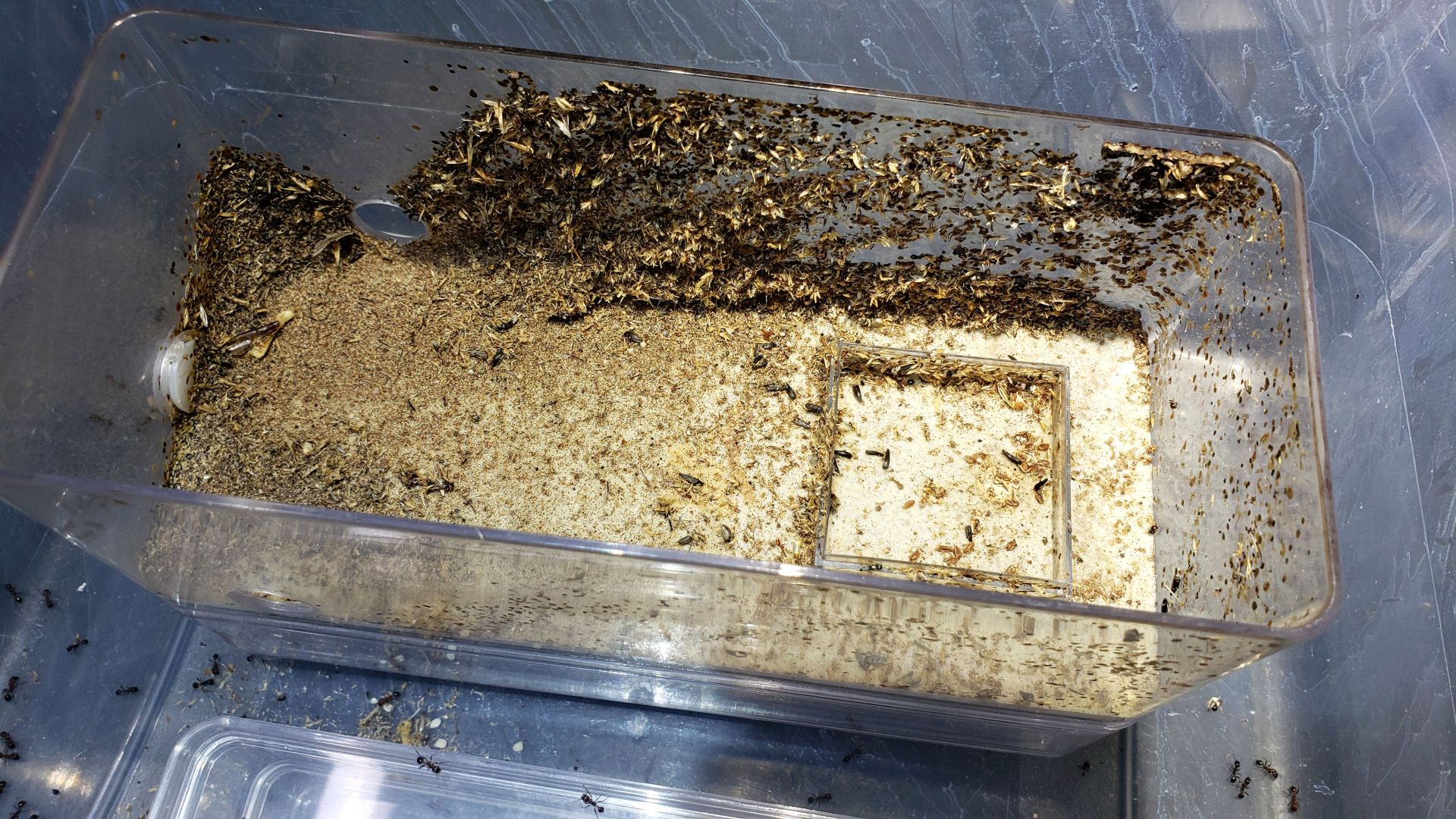
Here's a thick chunk of it. That's a lot of ant crap! Luckily it dissolves pretty quickly in water.
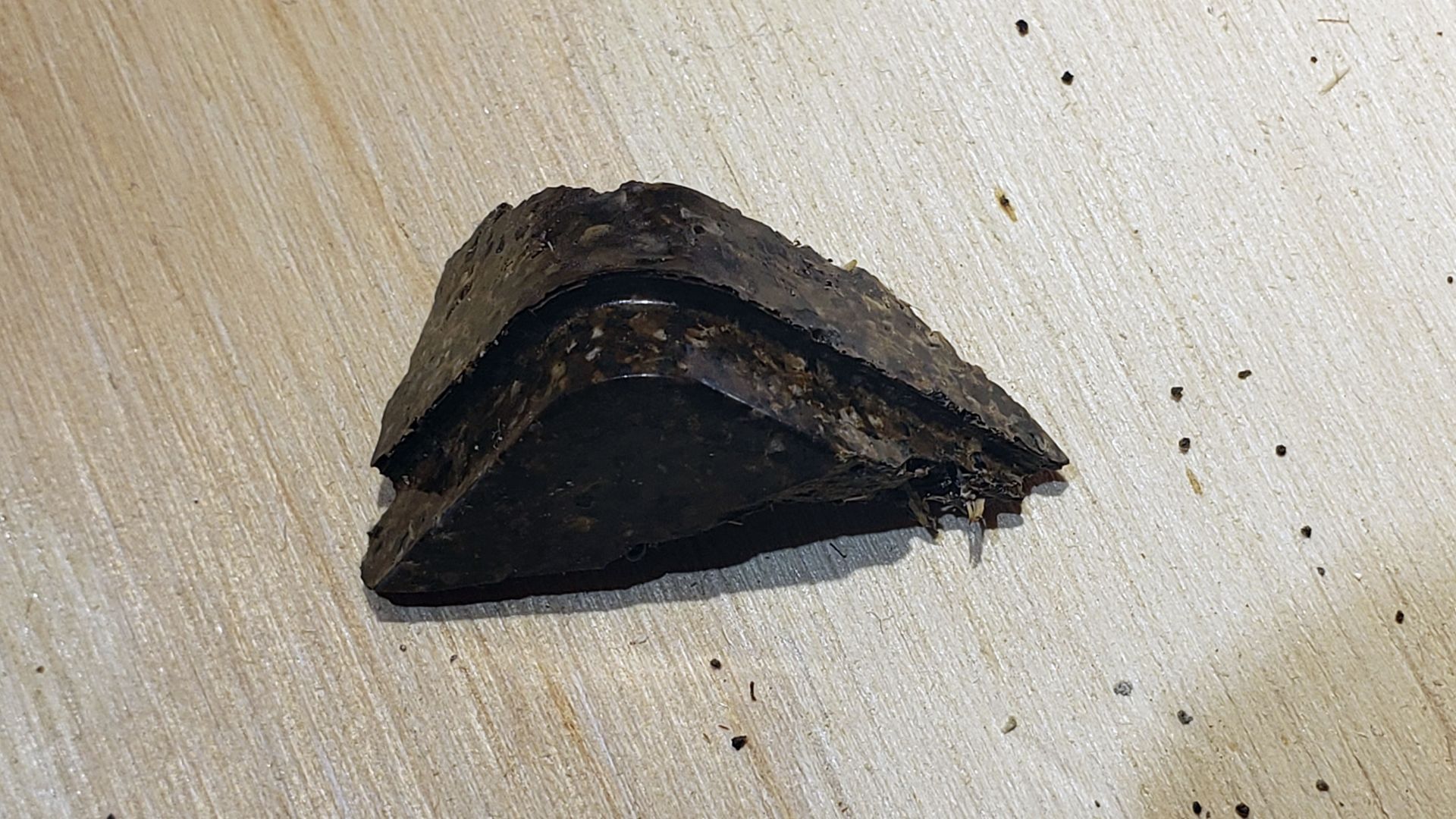
While I was cleaning out the foraging containers, I noticed one of the workers got loose and was being attacked by a tiny little spider. It looked like the spider was getting the upper hand and wrapping it up pretty good, but in the end the ant finally broke free and got away.
Update 6-11-2023
The colony continues to grow and is up to around 4000 workers now.
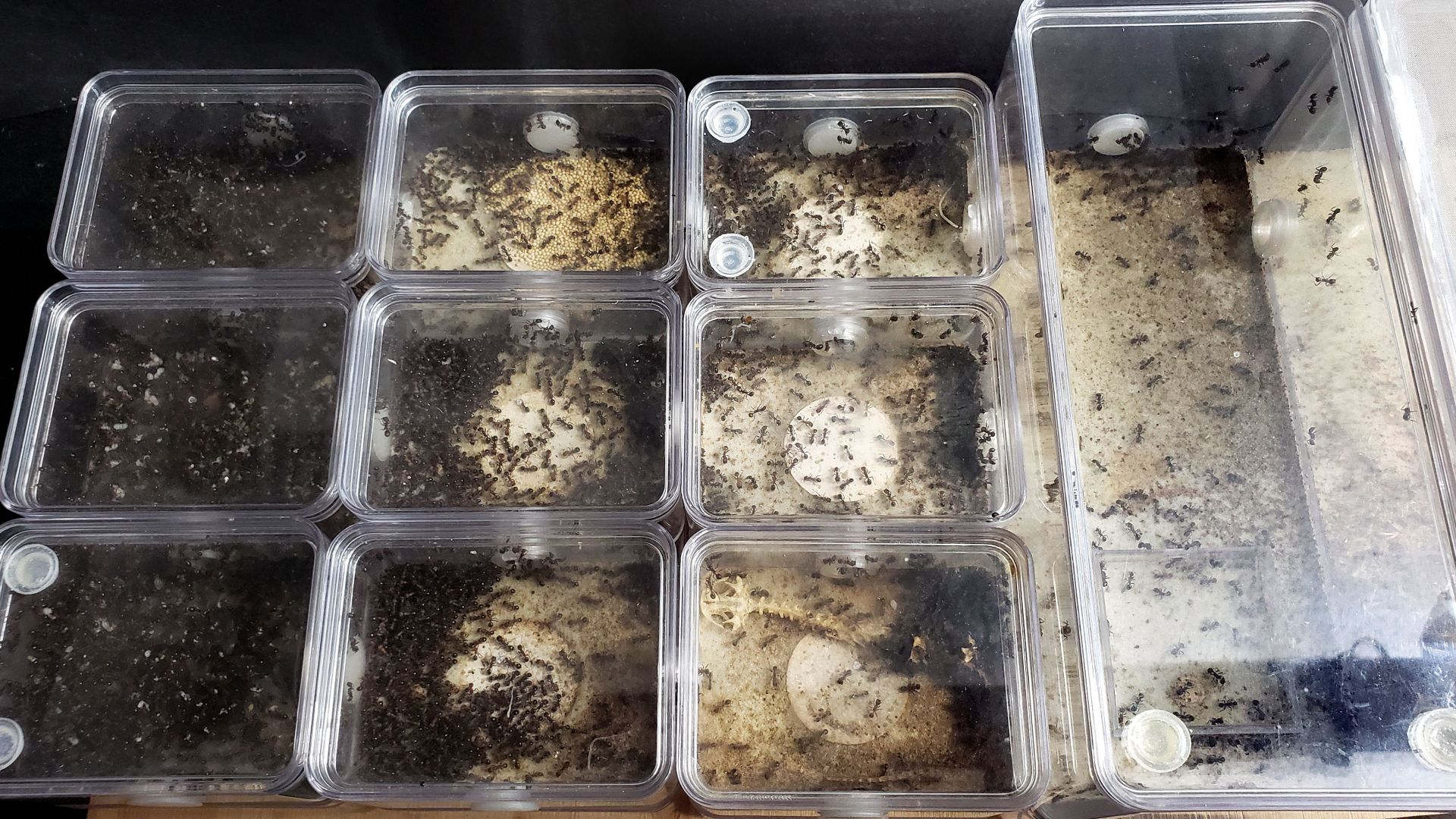
They love amaranth and always seem to store the vast majority of it in this one particular chamber. Maybe the humidity is just right for it there? I don't know.
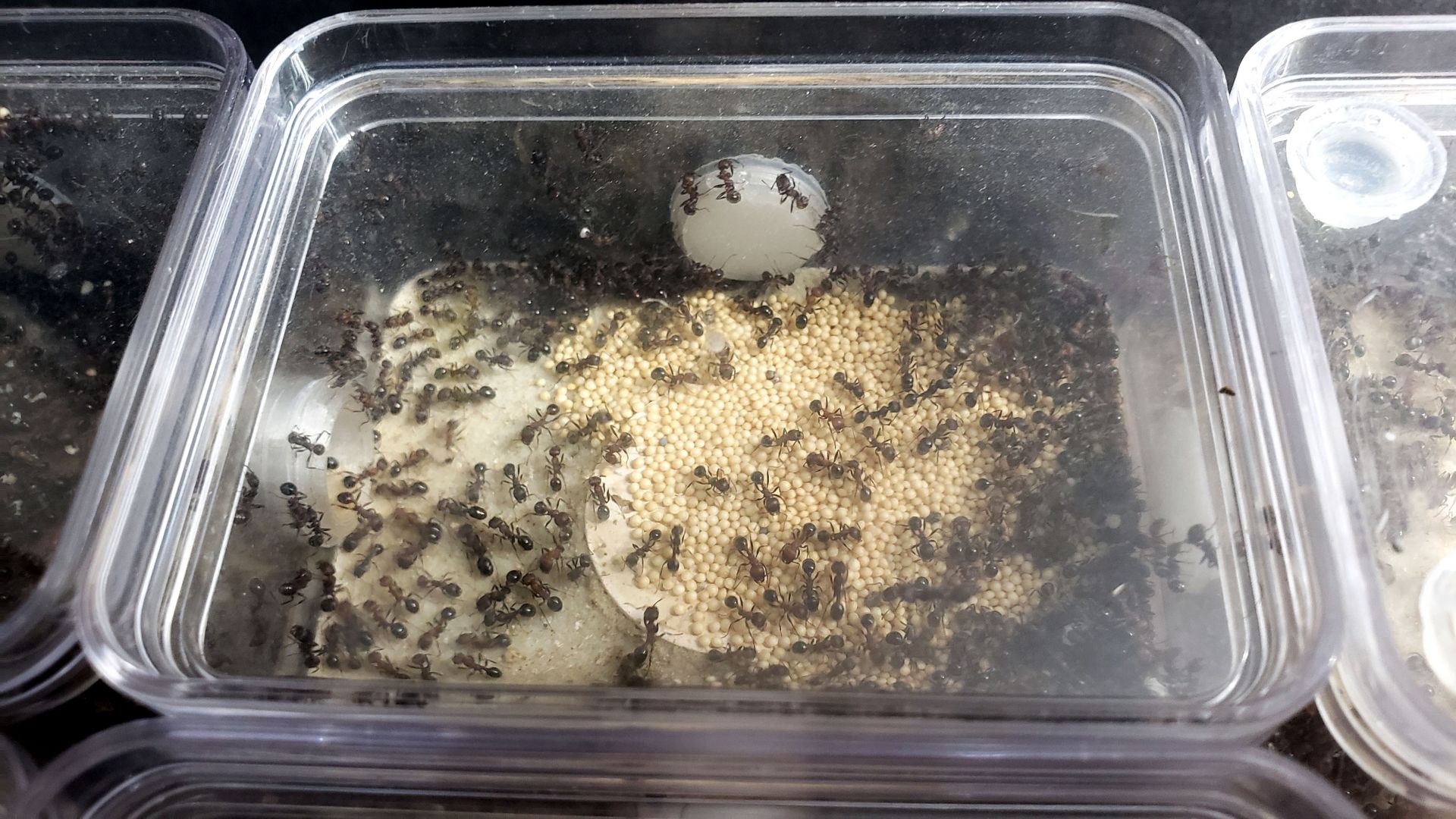
You can see how much trash they have already deposited in the foraging container in the last three months.
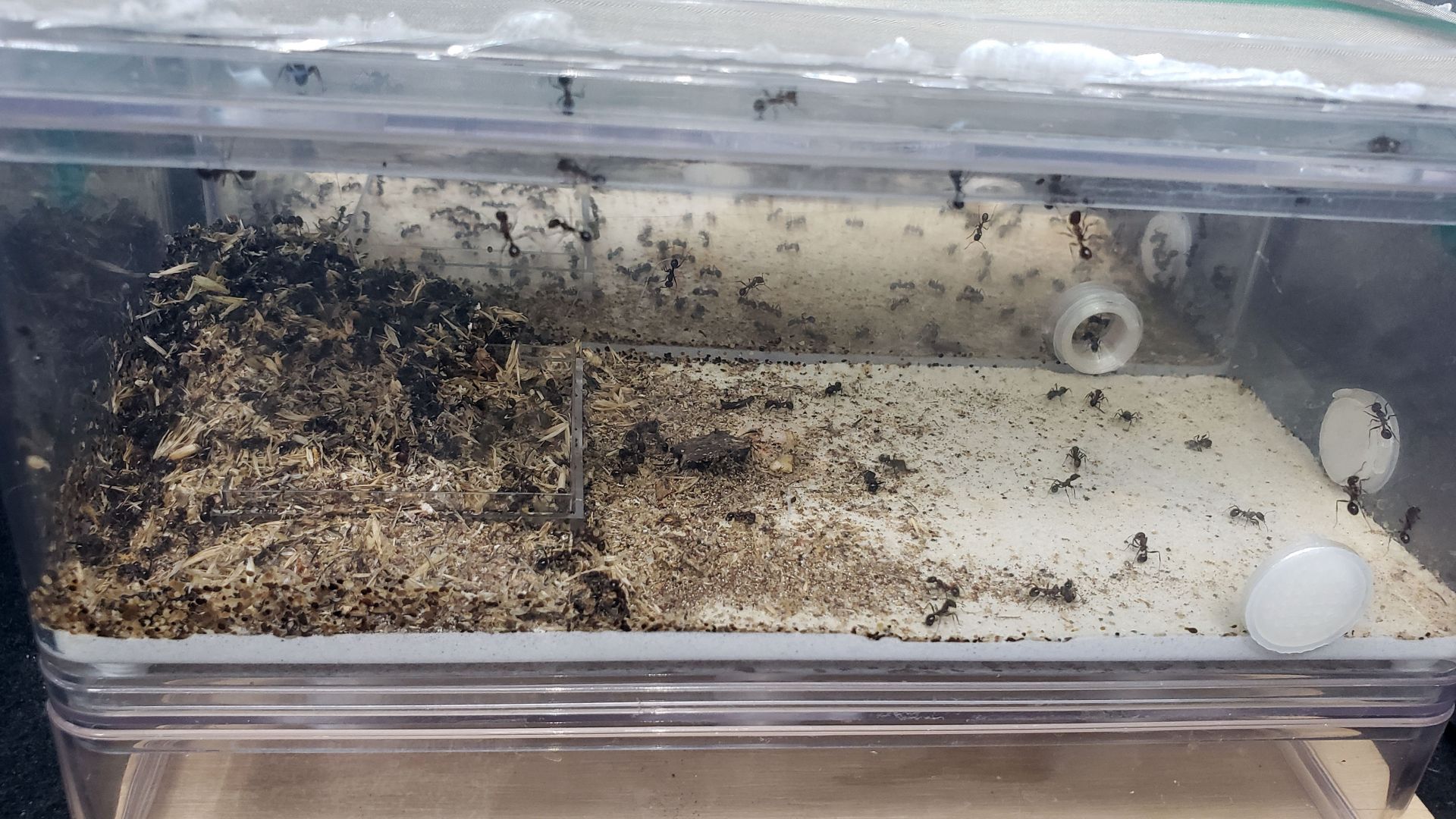
0 members, 1 guests, 0 anonymous users